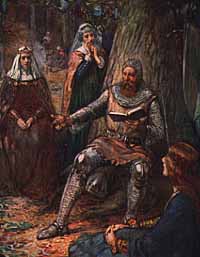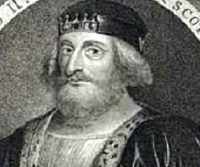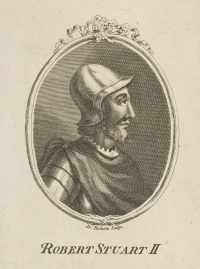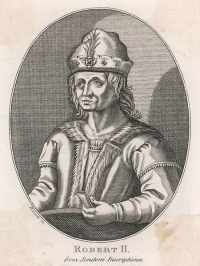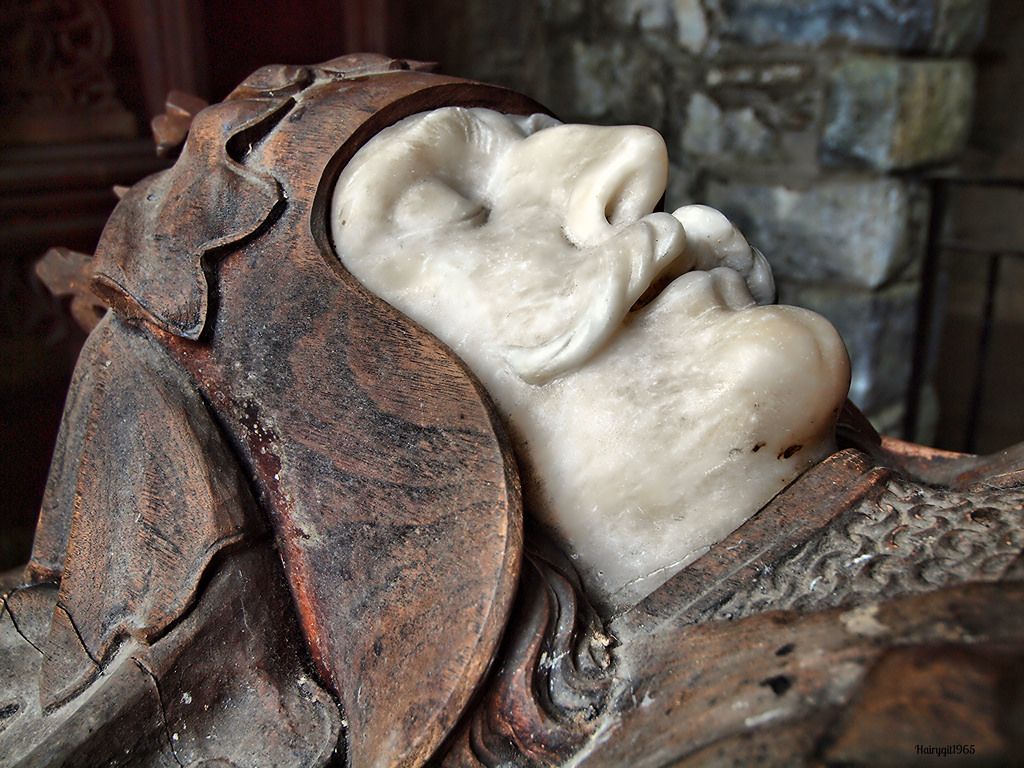Isle of Skye – Top Places – Best of the Isle of Skye, Scotland – Part 1
LOST WORLDS: Braveheart’s Scotland and William Wallace (S1, E11
My Maternal 15th. Great Grandmother, Lady Elizabeth Isabel Stewart of Lennox, Countess of Argyll
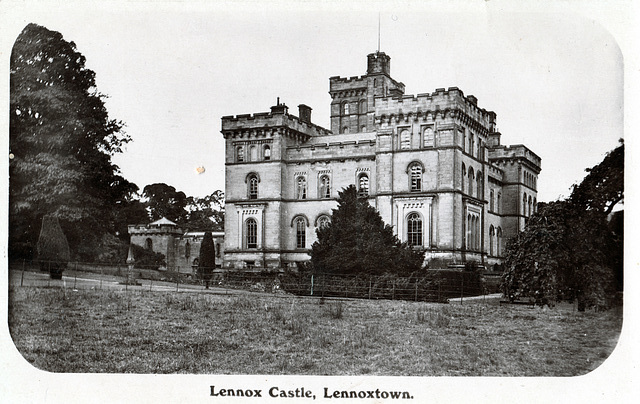
Name: Lady Elizabeth Isabel Stewart of Lennox, Countess of Argyll, daughter of John Stewart, the 1st. Earl of Lennox and Lady Margaret Montgomery (Montgomerie),
 Darnley_Sycamore_Trunk_Renfrewshire_Scotland
Darnley_Sycamore_Trunk_Renfrewshire_Scotland
Birth: 9 April 1465 in Darnley Castle, Renfrewshire, Scotland
Married: Sir Archibald Gillispie Campbell, 2nd. Earl of Argyll on 22 June 1479 in Balveny Castle, Balveny, Fife, Scotland
Children: (9) Margaret, Janet Mary, Colin, Donald Allen, John, Archibald, Jean/Jane, Marion and Ellen Campbell.
Biography:
Lady Elizabeth Stewart was the daughter of John Stewart, 1st Earl of Lennox and Margaret Montgomerie. She married Archibald Gillespie Campbell, 2nd Earl of Argyll, son of Colin Campbell, 1st Earl of Argyll and Isabel Stewart.
Children of Lady Elizabeth Stewart and Archibald Campbell, 2nd Earl of Argyll:
1. Lady Margaret Campbell b. 1484 d. 1555
2. Lady Janet Mary Campbell b. 1486 d. 1546
3. Sir Colin Campbell, 3rd Earl of Argyll b. 1486 d. 9 Oct 1529
4. Sir John Campbell, 1st of Cawdor b. 1490 d. 1 May 1546
5. Donald Allen Campbell b. 1492 d. 16526. Archibald Campbell, 1st. of Skipness b. 1494 d. 18 Jul 1537
7. Jean/Jane Campbell b. 1494 d. 15468. Marion Campbell b. 1497 d. 1533
9. Ellen Campbell b. 1498 d. 1528
Death: 9 December 1529 in Castle Campbell, Dollar, Clackmannanshire, Scotland
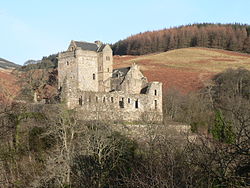
Castle Campbell, Dollar, Clackmannanshire, Scotland
Castle Campbell is a medieval castle situated above the town of Dollar, Clackmannanshire, in central Scotland. It was the lowland seat of the earls and dukes of Argyll, chiefs of Clan Campbell, from the 15th to the 19th century, and was visited by Mary, Queen of Scots, in the 16th century. Wikipedia
Burial: 1529 in Scone Priory, Old Scone, Perthshire, Scotland
Alternate Names:
Elizabeth Stewart Campell, Countess Of Argyll
Birth Name:
Margaret Stewart
Birth Name:
Elizabeth Stewart, Countess of Argyll
Birth Name:
Lady Margaret Elizabeth Stewart
Occupation
Countess Of Argyll
Custom Event
Alt. Death
Castle Campbell, Scotland
Alt. Death
Luss, Argyll and Bute, Scotland
Alt. Birth
Darnley, East Renfrewshire, Scotland
1475
My Maternal 16th. Great Scottish Grandfather, William de Seton

Name: Sir William de Seton, Master of Seton, son of William de Seton, 1st. Lord of Seton, and Lady Janet Dunbar, Baroness
Born: 1390 in Seton Manor, Prestonpans, East Lothian, Scotland
Married: 1410 in East Lothian, Scotland to Lady Janet Dunbar, Baroness of Seton
Children: (5)
- Lady Catherine Seton 1410–1478 • LBD7-Q9P
- Marion Seton 1414–1467 • GHCR-WHC
- Jeanette Seton 1415–1495 • GZGS-RG8
- Lord George Seton, 1st Lord Seton 1412–1478 • LTL2-NKP
- Janet Seton 1423–1493 • GZ55-6W9
- Military Service: 17 August 1424 in Battle of Verneuil
- Military Service: Killed in action during the Battle of Verneuil, part of the 100 Years’ War
Death: 17 August 1424 in Battle of Verneuil, Verneuil, Eure, Haute-Normandie, France

My Maternal 26th. Great Scottish Grandfather, Kenneth III MacKenneth, of Lochaber, Scotland

Kenneth III MacKenneth of Lochaber, Taoiseach of Lochaber
Gender: Male
Birth: circa 960
Scotland
Death: circa 1030 (61-79)
Immediate Family:
Son of Ferguard FitzAlan of Lochaber, Thane of Lochaber and Ragnild of Lochaber
Husband of Dunclina Nic Cineada MacKenneth, Princess of ScotlandMarried: about 1005 in Lochaber, Scotland
Father of : (3) Marion MacGillvary MacKenneth, Suine MacKenneth, Bancho MacKenneth, of Lochaber
Added by: Gail Ann Kern on May 21, 2008
Managed by: Esther Rowe Irish and 18 others
Kenneth of Lochaber
born about 0960 died about 1030father:
Ferguard of Lochaber
born 0929 died about 0980mother:
Ragnild Eriksdottir of Norway
spouse:Dunclina MacKenneth, Princess of Scotland
born about 0960 Scotlandchildren:
Banquo of Lochaber
born about 0990 died 1043source: geni.com

Lochaber is a name applied to areas of the Scottish Highlands. Historically, it consisted of the parishes of Kilmallie and Kilmonivaig, as they were before being reduced in extent by the creation of
Wikipedia

My Maternal 19th. Great Scottish Grandmother, Lady Elizabeth Mure of Rowallan, Countess of Strathearn and Athol


Lady Elizabeth Mure Stewart, Countess of Strathearn
| BIRTH | 2 March 1320 Rowallan Castle Kilmarnock, East Ayrshire, Scotland |
|---|---|
| DEATH | 1354 (aged 33–34) Paisley, Renfrewshire, Scotland |
| BURIAL | 1354 Paisley Abbey Paisley, Renfrewshire, Scotland |
| MEMORIAL ID | 50230493 |

Lady Elizabeth Mure was the first wife of Robert, High Steward of Scotland, and Guardian of Scotland (1338–1341 and from October 1346), who later became King Robert II of Scotland. Elizabeth was the daughter of Sir Adam Mure of Rowallan and his wife Janet Mure of Pokellie, she was born about 1320 at Rowallan Castle.
Elizabeth and Robert married in 1336, when Robert was not in line to inherit the crown. They did not seek permission from the Pope before marrying, therefore, their marriage was considered uncanonical. Because of this she is often considered his mistress and their children illegitimate. King David II was captured by the English in 1346 and Elizabeth’s husband became Guardian of Scotland, Regent in David’s absence and King of Scotland in all but name. Facing renewed scrutiny and criticism of their marriage and wanting their children to be acknowledged as legitimate, Robert applied to the Pope for a dispensation which was received 22 November 1347. Robert and Elizabeth married for a 2nd time, officially, in a church wedding, in 1349. Elizabeth and Robert were married for about about 19 years but only officially (by church standards) for about 6.
Elizabeth did not live to see her husband become King of Scotland but is believed to have died in 1354, certainly before May 1355 when Robert married for a 2nd time.
Elizabeth and Robert had the following children:
– John Stewart, Earl of Carrick who became King Robert III
– Walter Stewart, Lord of Fife
– Robert Stewart, Duke of Albany (c. 1340–1420)
– Alexander Stewart, Earl of Buchan
– Margaret Stewart, married John of Islay, Lord of the Isles
– Marjorie Stewart, married firstly, John Dunbar, Earl of Moray, and secondly, Sir Alexander Keith
– Johanna (Jean) Stewart, married firstly, Sir John Keith, secondly, Sir John Lyon, and thirdly in 1384, Sir James Sandilands.
– Isabella Stewart, married firstly, James Douglas, 2nd Earl of Douglas, and secondly, John Edmonstone of that Ilk
– Katherine Stewart, married Sir Robert Logan of Grugar and Restalrig, Lord High Admiral of Scotland
– Elizabeth Stewart, married Sir Thomas Hay, Lord High Constable of Scotland.

My Maternal 19th. Great Grandfather, Sir Walter Stewart, 6th. High Steward of Scotland

Walter Stewart ( 1293 – 9 April 1326) at Bathgate Castle was the 6th. hereditary High Steward of Scotland. He is buried at Paisley Abbey, Paisley, Renfrewshire, Scotland. Walter and Marjorie Stewart was the father of King Robert II of Scotland. He was the son of James Stewart, 5th. High Steward of Scotland and Giles (or Egidia) de Burgh, daughter of Walter de Burgh, 1st. Earl of Ulster. Walter Stewart married: 2 March 1315 in Dundonald Castle, Dundonald, Ayrshire, Scotland Princess Marjorie Bruce.

Walter fought on the Scottish side at the Battle of Bannockburn in 1314 commanding, with Douglas, the left wing of the Scots’ Army. According to another version of events, he was the nominal leader of one of the four Scottish schiltrons, but because of his youth and inexperience, its effective leader was his cousin James Douglas, Lord of Douglas. This is, however, disputed, as some claim that there were only three Scottish schiltrons at Bannockburn.
Upon the liberation of Robert The Bruce’s wife and daughter from their long captivity in England, the High Steward was sent to receive them at the Border and conduct them back to the Scottish Court.
During The Bruce’s absence in Ireland the High Steward and Sir James Douglas managed government affairs and spent much time defending the Scottish Borders. Upon the capture of Berwick-upon-Tweed from the English in 1318 he got command of the town which, on 24 July 1319 was laid siege to by King Edward II of England. Several of the siege engines were destroyed by the Scots’ garrison and the Steward suddenly rushed in force from the town to drive off the enemy. In 1322, with Douglas and Thomas Randolph, he made an attempt to surprise the English King at Byland Abbey, near Malton, Yorkshire. Edward, however, escaped, pursued towards York by The Steward and 500 horsemen.
Walter, Steward of Scotland, made a charter to John St. Clair, his valet, of the lands of Maxton, Roxburghshire, circa 1320/1326, one of the witnesses being “Roberto de Lauwedir (Robert de Lauder) tunc justiciario Laudonie” (Justiciar of Lothian).
Walter married, in 1315, Princess Marjorie Bruce, only daughter of Robert I of Scotland by his first wife Isabella of Mar. The Lordship of Largs, forfeited by John Balliol, was bestowed upon Walter by Robert the Bruce, who also granted the Farme Castle estate in Rutherglen to him, as well as other lands and the feudal barony of Bathgate, Linlithgowshire. Walter and Marjorie had one son.
Name: Sir Walter “6th High Steward” Stewart
BIRTH: 1293 in Dundonald, Ayrshire, Scotland
DEATH: 9 Apr 1326 (aged 33–34) in Bathgate Castle,
Bathgate, West Lothian, Scotland
BURIAL: 1326 in Paisley Abbey, Paisley, Renfrewshire, Scotland
Findagrave MEMORIAL ID: 50195576


My Maternal 19th. Great Scottish Grandfather, King Robert II Stewart, Roibert II Stiùbhairt (His Gaelic Name)
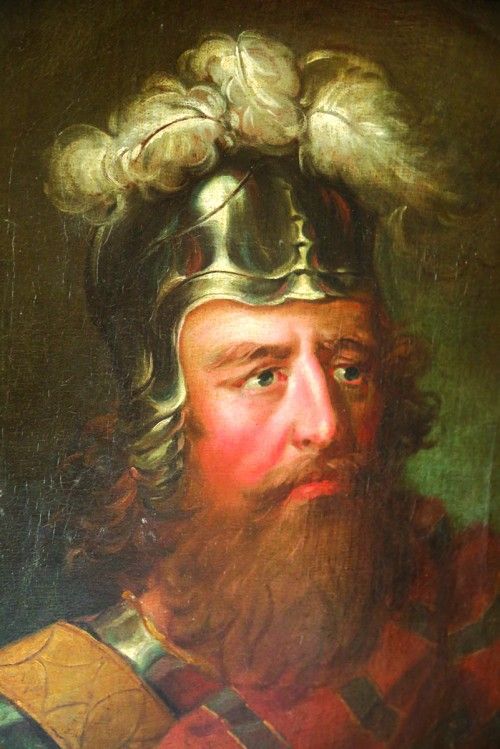
King Robert Stewart, the Bruce, II
Robert II (2 March 1316 – 19 April 1390) reigned as King of Scots from 1371 to his death as the first monarch of the House of Stewart. He was the son of Walter Stewart, 6th High Steward of Scotland and of Marjorie Bruce, daughter of the Scottish king Robert the Bruce by his first wife Isabella of Mar.
Edward Bruce, younger brother of Robert the Bruce, was named heir presumptive but died without heirs on 3 December 1318. Marjorie had died probably in 1317 in a riding accident and parliament decreed her infant son, Robert Stewart, as heir presumptive, but this lapsed on 5 March 1324 on the birth of a son, David, to King Robert and his second wife, Elizabeth de Burgh.
Robert Stewart became High Steward of Scotland on his father’s death on 9 April 1326, and in the same year parliament confirmed the young Steward as heir should Prince David die without a successor. In 1329 King Robert I died and the six-year-old David succeeded to the throne under the guardianship of Thomas Randolph, Earl of Moray.
Edward Balliol, son of King John Balliol—assisted by the English and those Scottish nobles who had been disinherited by Robert I—invaded Scotland inflicting heavy defeats on the Bruce party on 11 August 1332 at Dupplin Moor and Halidon Hill on 19 July 1333. Robert, who had fought at Halidon joined his uncle, King David in refuge in Dumbarton Castle.
David escaped to France in 1334 and parliament, still functioning, appointed Robert and John Randolph, 3rd Earl of Moray as joint Guardians of the kingdom. Randolph was captured by the English in July 1335 and in the same year Robert submitted to Balliol bringing about the removal of his guardianship. The office was reinstated in 1338 and Robert held it until David’s return from France in June 1341. Hostilities continued and Robert was with David at the Neville’s Cross on 17 October 1346 and either escaped or fled the field but David was captured and remained a prisoner until he was ransomed in October 1357.
Robert married Elizabeth Mure around 1348, legitimizing his four sons and five daughters. His subsequent marriage to Euphemia de Ross in 2 May 1355 in Kyle, Ayrshire, Scotland, produced two sons and two surviving daughters. Robert rebelled against the King in 1363 but submitted to him following a threat to his right of succession.
David died in 1371 and Robert succeeded him at the age of fifty-five. The border magnates continued to attack English-held zones in southern Scotland and by 1384, the Scots had re-taken most of the occupied lands. Robert ensured that Scotland was included in the Anglo-French truce of 1384 and that was a factor in the coup in November when he lost control of the country first to his eldest son, John, and then from 1388 to John’s younger brother, Robert. King Robert died in Dundonald Castle in 1390 and was buried at Dunfermline Abbey. source: Wikipedia
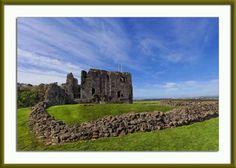
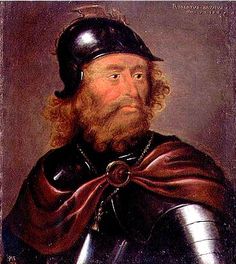
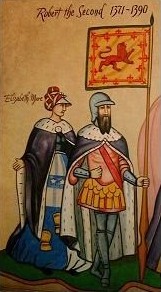
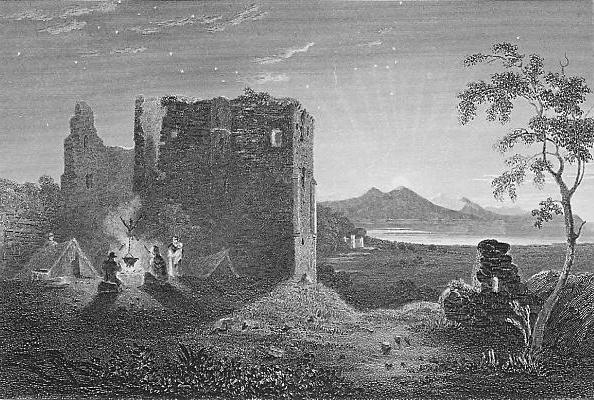
Dundonald Castle, Kyle, Ayrshire, Scotland, King Robert II was born and died there
Name: Robert Bruce II, King of Scotland
Reign: 22 February 1371 – 19 April 1390
Coronation: 26 March 1371
Predecessor: David II
Successor: Robert IIIBorn: 2 March 1316
Dundonald Castle, South Ayrshire, ScotlandDied 19 April 1390 (aged 74)
Dundonald Castle, South Ayrshire, ScotlandBurial
1390
Dunfermline Abbey, Dunfermline, Fife, ScotlandSpouses:
Elizabeth Mure of Rowallan
Euphemia de Ross
Issue
more… Robert III, King of Scots
Walter, Lord of Fife
Robert, Duke of Albany
Alexander, Earl of Buchan
David, Earl of Caithness
Walter, Earl of Atholl
Thomas, Bishop of St. Andrews
House: Stewart
Father: Sir Walter Stewart, 6th High Steward of Scotland
Mother: Princess Marjorie Bruce
Religion: Roman Catholicsource: Wikipedia
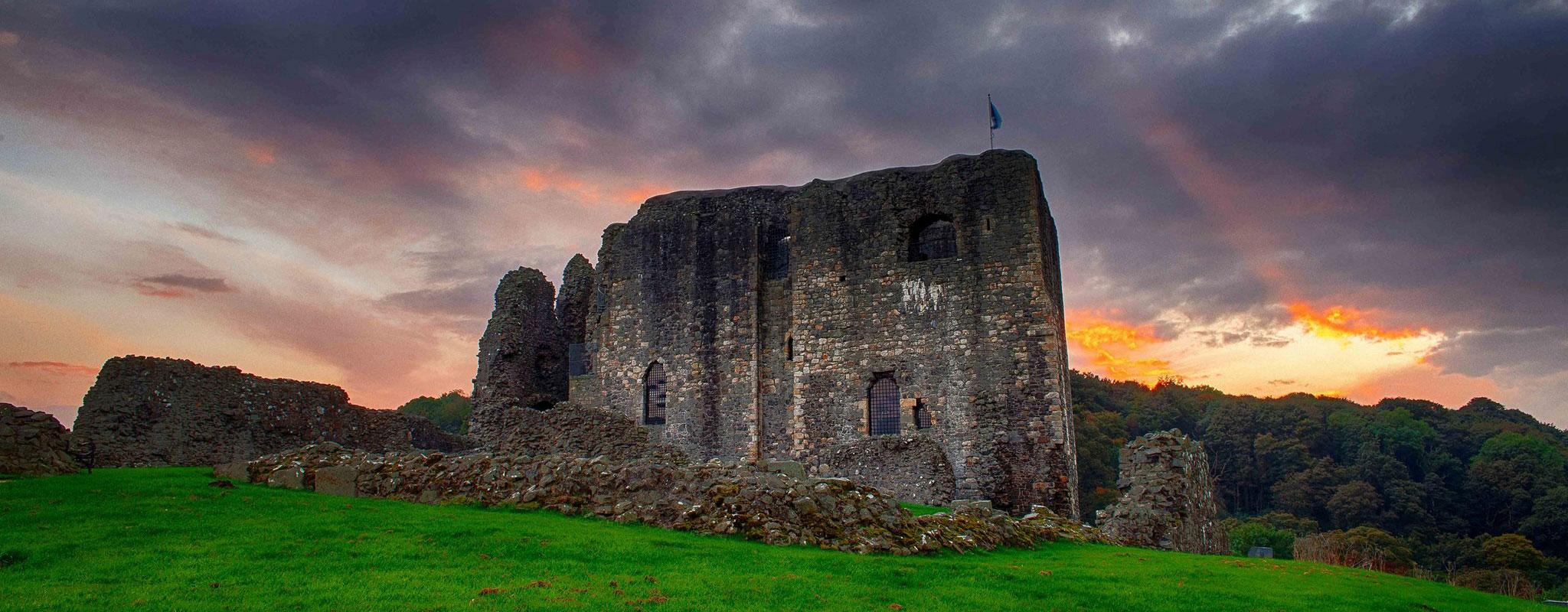
Dundonald Castle, South Ayrshire, Scotland
Dundonald Castle is situated on a hill overlooking the village of Dundonald, between Kilmarnock and Troon in South Ayrshire, Scotland. Dundonald Castle is a fortified tower house built for Robert II on his accession to the throne of Scotland in 1371 and it was used as a royal residence by Robert II and his son Robert III.
There have been three medieval castles present on this site. The first was built by one of the stewards of the king of Scots, most probably Walter, the first steward, who came to Scotland in 1136. There is no surviving evidence of this castle above ground today.
The second castle was built in the late 13th Century by Alexander Stewart, 4th High Steward, this castle was predominantly built of stone. It would have been one of the grandest baronial residences of its time. It was largely destroyed by the Scottish during the Wars of Scottish Independence in the early 14th century. It was not untypical for castles that were not of strategic importance to be destroyed by those who controlled them to ensure that no one else could gain a foothold into the area. There is little remaining of this castle, however there is a well and a rounded stump of a tower near to the present castle. source: Wikipedia
King Robert Stewart II
King Robert Stewart II
Gender: Male
Birth: March 02, 1316
Dundonald Castle, South Ayrshire, ScotlandDeath: April 19, 1390 (74)
Dundonald Castle, South Ayrshire, ScotlandPlace of Burial: 1390 Dunfermline Abbey, Fife, Scotland (his heart is buried at Melrose Abbey, Scotland)
Immediate Family:
Son of Walter Stewart, 6th High Steward of Scotland and Marjorie Bruce, Princess of Scotland
Husband of Elizabeth Mure of Rowallan and Euphemia de Ross, Queen Consort of Scotland
Partner of Moira le Leche; Isabella Boucellier?; Unknown Mistress(es) of Robert ll King of Scots and mother of John “the Red” Stewart
Ex-partner of Mariota Cardney
Father of Sir John Stewart, Sheriff of Bute; Maria Stewart; Walter Stewart of Cardney and of Cluny; Alexander Stewart of Innerlunan; James Stewart of Abernethy and Kinfauns and 18 others
Half brother of Jean Stewart; Sir John Stewart of Ralston, Kt.; Egidia Stewart and Andrew Stewart
Added by: Charles Verrier on March 2, 2007
Managed by: James Fred Patin, Jr. and 479 others
Curated by:Source: Erica Howton, Geni.com
- Alternate Name • Robert II Raibeart ‘the Steward’ Stewart Stuart King of Scots
- Alternate Name • Robert King of Scots II
- Alternate Name • Sir Robert Stewart
- Alternate Name • King Robert II
- Alternate Name • Robert the Steward the 7th High Steward of Scotland, Roibert II Stiùbhairt (His Gaelic Name) , Robert II King of Scotland , Sir Robert Stewart.
- Custom Event • Designated as Heir to Throne of Scotland from 14 October 1318 to 5 March 1324, When Edward Bruce, younger brother and heir of Robert the Bruce, King of Scots, died suddenly in 1318, Robert Stewart, Robert’s infant grandson, was named as heir presumptive.
- Custom Event • Restored to The Line of Succession July 1326, Cambuskenneth Abbey, Stirlingshire, Scotland.
- David Stewart became heir to the throne of Scotland upon his birth on 5 March 1324, displacing his nephew from the line of succession. However, 2 heirs are better than only one.
- Custom Event • Guardian of Scotland (Regent) 1334-1335, 1338-1341, 1346-1357
- David II inherited the throne of Scotland at age 5, during his minority there were multiple Guardians of Scotland (Regents) including Robert Stewart, High Steward of Scotland.
- Custom Event • Start of His Rule22 Feb 1371
- Custom Event • Coronation26 Mar 1371 Scone, Perthshire, Scotland
- Custom Event • End of His Rule 19 Apr 1390
- Custom Event • Fact: Had Eyes The Color Of Sandalwood
- Custom Event • Politics: First Monarch Of The Royal House Of Stewart
- Title of Nobility • King of Scotland, Guardian of Scotland, High Steward of Scotland, Earl of Strathearn
- Affiliation • House of Stuart – Founder
- Source: familysearch.org
Robert II of Scotland was named Robert Stewart at birth and took the reginal name of Robert II when he became King of Scotland.
Robert was the only son of Walter Stewart, 6th High Steward of Scotland, and of Marjorie Bruce, the oldest child of the Scottish king Robert the Bruce by his first wife Isabella of Mar. Robert was the oldest grandchild of Robert the Bruce and succeed the throne of Scotland upon the death of his uncle King David II. David was the only legitimate son of Robert the Bruce and died childless.
Name: King Robert II of Scotland
Father: Walter Stewart
Mother: Marjorie daughter of Robert Bruce
House of: Stewart
Born: March 2, 1316 at Dundonald Castle, Ayrshire, Scotland
Ascended to the throne: February 22, 1371 aged 54 years
Crowned: March 26, 1371 at Scone Abbey, Perthshire
Married:(1) Elizabeth Mure, 1336
Married:(2) Euphemia of Moray, 1355
Children: 10 by Elizabeth Mure including John (Robert III), 4 by Euphemia and several illegitimate.
Died: April 19, 1390, at Dundonald Castle, Ayrshire, Scotland (aged 74 years, 1 month, and 17 days)
Buried at: 1390 at Dunfermline Abbey, Scotland (His heart was buried at Melrose Abbey, Scotland)
Succeeded by: his son John who took the name Robert III
Robert was a grandson of Robert Bruce, and the first in the House of Stewart dynasty. The name came from his ancestor Walter Stewart who was appointed High Steward of Scotland by David I. He had escaped following the defeat of David II at Halidon Hill in 1333 and took over as Guardian of Scotland while David was in exile in France.
He was a mature man of 54 when he succeeded to the throne on the death of David, but he was weak king and did not rule well over the nobles who were critical of him leading to a loss of prestige of the crown. His heir John took over the rule to attempt to restore law and order.
A truce with England in 1384 was short lived, and the border wars continued. In 1388 the Scots under James Douglas won a victory at Otterburn near Newcastle over Henry Percy ‘Hotspur’ of Northumberland.
Robert had 14 legitimate children and at least 7 illegitimate. He was succeeded by his son John who took the name Robert III.
Timeline for King Robert II of Scotland
Year Event
1371 Robert Stewart, the first Stewart King of Scotland becomes king
1384 Truce is arranged between England, Scotland, and France. Scotland refuses to recognize truce. Anglo Scottish war resumes
1388 Battle of Otterburn in which Scots defeat Henry Percy (Harry Hotspur)
1390 Robert II dies and is succeeded by his son John, who becomes Robert III.
source: https://www.britroyals.com/scots.asp?id=robert2
My Maternal 19th. Great Grandmother, Princess Marjorie Bruce
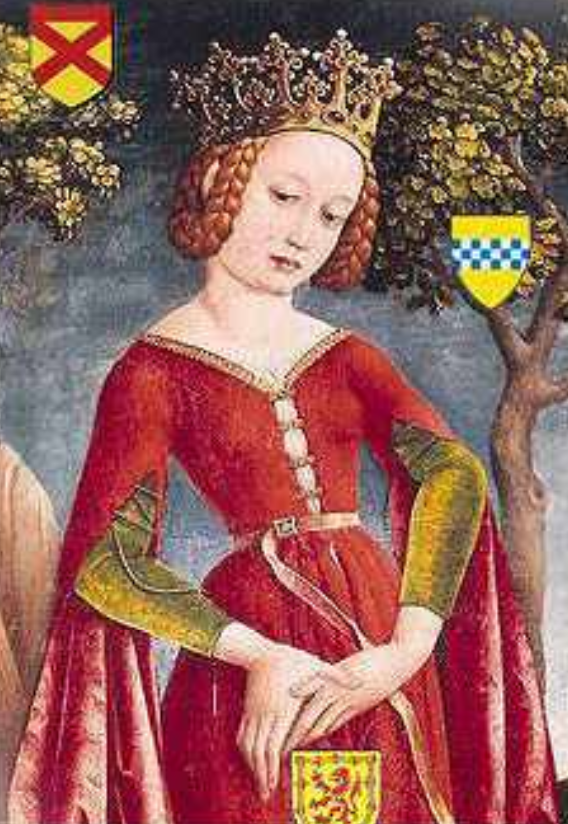
Princess Marjorie Bruce, of Scotland
NAME: Marjory Bruce Stewart
BIRTH: Dec 1296
Dundonald Castle, Kyle, Renfrewshire, Scotland
DEATH: 2 Mar 1316 (aged 19)
Paisley, Renfrewshire, Scotland
BURIAL: 1316
Paisley Abbey
Paisley, Renfrewshire, Scotland
FINDAGRAVE MEMORIAL ID: 44045811
Marjorie Bruce or Marjorie de Brus (1296 – 2 March 1316) was the eldest daughter of Robert the Bruce, King of Scots by his first wife, Isabella of Mar.
Her son was the first Stewart monarch, King Robert II of Scotland. Her father remarried, after a certain period of time, to Elizabeth de Burgh. When she was about 12 years old she was captured by the English and held prisoner, she was released around 1314 after her fathers Scottish victory at The Battle of Bannockburn.
She was married to the young Walter Stewart, 6th High Steward of Scotland after distinguishing himself at the Battle of Bannockburn. Marjorie’s father gave her hand in marriage as a reward. Her dowry included the Barony of Bathgate in West Lothian.
Two years after her marriage, on 2 March 1316, a heavily pregnant Marjorie was riding in Gallowhill, Paisley, Renfrewshire when her horse was suddenly startled and threw her to the ground at a place call “The Knock”. Marjorie was seriously injured, her fall caused a dislocation of her neck bone. She went into premature labor and delivered a son by cesarean section at Paisley Abbey, She only survived birthing her son by a few hours at most. She was 19 at the time of her death, which was in common with her mother, who also died at nineteen years old during childbirth. Her only son Robert would succeed his childless Uncle David of Scotland in 1371 as Robert 2, King of Scots.
Her mother, Isabella, was a noblewoman from the Clan Mar. Marjorie was named after her father’s mother, Marjorie, Countess of Carrick. Soon after giving birth to Marjorie, at the age of 19, Isabella died. Marjorie’s father was at that time the Earl of Carrick.
According to legend, Marjorie’s parents had been very much in love, and Robert the Bruce did not remarry until 1302 (six years after his first wife’s death), to a courtier named Elizabeth de Burgh.
On 27 March 1306, her father was crowned King of Scots at Scone, Perthshire, and Marjorie, then 10 years old, became a Princess of Scotland.

Marjorie’s parents, as depicted in the 1562 Forman Armorial

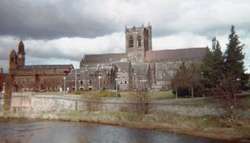
Paisley Abbey, Renfrewshire, Scotland
Three months after the coronation, in June, 1306, her father was defeated at the Battle of Methven. He sent his wife, two sisters, and Marjorie north with his supporter Isabella MacDuff, Countess of Buchan, but by the end of June they were captured by Uilleam II, Earl of Ross, a Balliol supporter, who handed them over to the English.
As punishment, Edward I of England sent his hostages to different places in England. Marjorie was sent to the convent at Watton. Her aunt, Christina Bruce, was sent to another convent.
Elizabeth de Burgh was placed under house arrest at a manor house in Yorkshire. Elizabeth de Burgh’s punishment was lighter than the others. This is due to the fact that Edward I needed the support of her father, the powerful Earl of Ulster. Marjorie’s aunt, Mary Bruce, and the Countess of Buchan were imprisoned in wooden cages, exposed to public view, at Roxburgh Castle and Berwick Castle, respectively.
For the next four years, Elizabeth, Christina, Mary, and Isabella endured solitary confinement. The latter two experienced daily public humiliation. A cage was built for Marjorie, who was around the age of 12, at the Tower of London, but Edward I reconsidered. He instead sent her to the Gilbertine convent in Watton. Christopher Seton, Christina’s husband, was executed.
Edward I died on 7 July 1307. He was succeeded by his son, Edward II, who subsequently held Marjorie captive in a convent for about seven more years. She was finally set free around 1314, probably in exchange for English noblemen captured after the Battle of Bannockburn.
Upon the liberation of Elizabeth de Brugh and Marjorie from their long captivity in England, Walter Stewart, 6th High Steward of Scotland was sent to receive them at the Anglo-Scottish Border and conduct them back to the Scottish court. He later married Marjorie. Her dowry included the Barony of Bathgate in West Lothian.
The traditional story is that two years later, on 2 March 1316, Marjorie was riding in Gallowhill, Paisley, Renfrewshire while heavily pregnant. Her horse was suddenly startled and threw her to the ground. She went into premature labour and her child, Robert II of Scotland, was born. Marjorie died soon afterward at the age of around 20, like her mother, who was roughly the same age when she died in childbirth. However, it is not clear that this traditional story is correct; some accounts indicate that she may have survived into 1317. She may still have died in a riding accident, but this could have taken place after the birth of her son.
At the junction of Renfrew Road and Dundonald Road in Paisley, a cairn marks the spot called “the Knock”, near where Marjorie reputedly fell from her horse. Bruce Road and Marjorie Drive are named in her honour. She is buried at Paisley Abbey.
Her son succeeded his childless uncle David II of Scotland in 1371 as King Robert II. Her descendants include the House of Stewart (now styled Stuart) and all their successors on the throne of Scotland, England and the United Kingdom.
The original site of Bathgate Castle, which was part of her dowry, can be found on the grounds of Bathgate Golf Club. The site is protected by the Historic Scotland organisation and the Club is debarred from carrying out any excavation work on the site without prior permission.
Every year on the first Saturday of June, the town of Bathgate celebrates the marriage of Marjorie and Walter in their annual historical pageant, just before the town’s procession and Newland festival. Local school children are given the parts of Marjorie, Walter, and other members of the court. After the pageant, everyone joins the procession along with Robert the Bruce on horseback. Princess Marjorie Bruce, of Scotland source: Wikipedia
She was the only daughter of Robert I of Scotland and his first wife Isabella of Mar. Her paternal grandparents were Robert de Brus, 6th Lord of Annandale and Marjorie of Carrick, 3rd Countess of Carrick.
In 1302, her father was remarried to Elizabeth de Burgh. They were crowned King and Queen of Scots at Scone, Perthshire on March 27, 1306. The crowning occurred during the Wars of Scottish Independence in opposition to Edward I of England.She was captured along with her step-mother and other women of the House of Bruce by the end of June, 1306. Marjorie was captured and locked in a cage in the centre of the town Lanercost for about a year. Edward I died on July 7, 1307.
He was succeeded by his son Edward II of England. Edward II had originally planned for her to be moved to a cage at the Tower of London, however, people became angry at his treatment of the girl and he abandoned the idea moving her to London.
After that Edward II held her in a nunnery for about 8 years. She was finally set free at about 1314. Either shortly before or shortly after the Battle of Bannockburn (June 23 – June 24, 1314).
Walter Stewart, 6th High Steward of Scotland distinguished himself in the battle and was rewarded with the hand of the adolescent Princess of Scotland. Her dowry included the Barony of Bathgate in West Lothian, Scotland.
Two years later Marjorie went horseriding near Paisley, Renfrewshire while pregnant. Her horse was suddenly frightened and threw her to the ground. She went into premature labour. Her first and only son Robert II of Scotland was delivered by caesarean section.Her reported last words were “He’s a laddie; I ken he’s a laddie; he will be King”. She survived the birth by a few hours at most. Her son would indeed succeed his childless uncle David II of Scotland in 1371.
Her descendants include the House of Stuart and all their successors at the throne of Scotland, Great Britain and the UK. source: 27 March 2019 by C.N. Helkenn
My Maternal 22nd. Great Grandfather, Walter FitzAlan Stewart, of Dundonald, 3rd. High Steward of Scotland

Name: Walter FitzAlan Stewart, of Dundonald, 3rd. High Steward of Scotland
Born: 1182 in Paisley, Renfrewshire, Scotland
Married: about 1200 in Paisley Abbey, Paisley, Renfrewshire, Scotland to Lady Beatrix (Bethoc Nic Gille Crist) de Angus
From Medlands: http://fmg.ac/Projects/MedLands/SCOTLAND.htm#Alexander4Stewartdied1283A (please note:- Medlands does not mention the name of his wife as mentioned below )
WALTER FitzAlan, son of ALAN FitzWalter 2nd High Steward of Scotland & his wife — (-1241). He succeeded his father as 3rd High Steward of Scotland. “Walterus filii Alani domini regis Scotie senescallus” donated property to Paisley monastery by undated charter[1067]. The seal of “Walteri filii Alani” is appended to a charter under which “Walter son of Alan the Stuart” confirmed the donation of land at Edmonstone to Melrose by “Walter the son of Alan his grandfather”[1068]. Alexander II King of Scotland confirmed the donation of land “in Tibermur” made by “Walterus filius Alani”, in confirmation of a donation by “Suanus filius Thori avus eiusdem Walteri”, by undated charter[1069]. “Walterus filius Alani” confirmed the donation of “Tubermure” made to Scone abbey by “Swan filius Thory auus meus” by undated charter, dated to before 1221, witnessed by “Gilbto comite de Stathern dño Robto filio ei, Rogero de Mortimer, Galfrido de Inutunglas vic de Pth, Dunecano fil Moregrund, Reginaldo de Warenn, Walto filio Swani, Henr fil Alani fil Wani…”[1070]. He adopted the name Stewart. The Melrose Chronicle records the death in 1241 of “Walterus filius Alani junioris”[1071].
Sources 1.[S250] http://www.clanstirling.org
2.Walter Stewart & his wife had [seven] children;
1. ALEXANDER Stewart (-1283). The Liber Pluscardensis names “dominus Alexander Stevart de Dundonald, pronepos primi Walteri Stewart”[1136]. He succeeded his father as High Steward of Scotland. – see below.
2. JOHN Stewart (-killed in battle Damietta, Egypt 1249). The Visitation of Cambridge 1575 records that “Johannes Stuart primogenitus Walt” was killed “apud Massour”, adding that “Gualto patre et Patricio Marchie comite” fought under “Lodovico Francor’ Rege”[1137]. It is unlikely that John was the oldest son of Walter as no record has been found of his having been appointed High Steward after his father’s death.
3. WALTER Stewart “Bailloch/Freckled” (-before 28 Apr 1295). “Dominis Waltero fratre nostro…” subscribed the undated charter under which “Alexander filius Walteri senescalus regis Scotie” donated “ecclesiam de Dundonald…de Sanchar…de Awchinlac” to Paisley monastery[1138]. Earl of Menteith [1260], de iure uxoris. – EARLS of MENTEITH.
4. [ROBERT Stewart . The Visitation of Cambridge 1575 names “Robertus Stuart iunior filius Gualteri” adding that his father granted him “agro de Tourbourton” and that he married “heredem — Roberti Crux de Cruxton” from whom descended “Barones de Derule et tandem etiam comites a Lennex”, naming their son “Johannes de Stuart de Dernle” and his son “Robertus Styward de Dernle” (adding that the latter was a hostage in England for “Rege David Brus” in 1357)[1139]. m — Crux, daughter of ROBERT Crux of Cruxton & his wife —. The Visitation of Cambridge 1575 records that “Robertus Stuart iunior filius Gualteri” married “heredem — Roberti Crux de Cruxton” from whom descended “Barones de Derule et tandem etiam comites a Lennex”[1140].]
5. ELIZABETH Stewart (-before her husband). “Maldovenus comes de Levenax” donated “terram de Drumthocher et…de Drumthecglunan” to Paisley monastery, for the soul of “Elizabeth sponse mee”, by undated charter, witnessed by “Macolmo filio meo, Amelec, Macolmo, Duncano fratribus meis…”[1141]. m MALDOUEN of Lennox, son of ALWYN Earl of Lennox & his wife Eve of Menteith (-after 12 Mar 1251). He succeeded his father in [1224] as Earl of Lennox.
6. [MARGARET Stewart . The primary source which confirms her parentage and marriage has not yet been identified. m NEIL Earl of Carrick, son of DUNCAN Earl of Carrick & his wife — (-1256).]
7. daughter . Balfour Paul names Jean as daughter of James Lord of Bute and Arran, and records her marriage, but does not cite the corresponding primary source[1142]. m DONALD Lord of the Isles, son of REGINALD Lord of the Isles & his wife — (-Island of Kerrara 1249, bur Iona).
~~~~~~~~~~~~~~~~~~~~~~~~~~~
Walter, Steward of Dundonald (died 1246) was 3rd hereditary High Steward of Scotland and Justiciar of Scotia.
He was the eldest son of Alan fitz Walter, 2nd High Steward of Scotland by his second wife Alesta, daughter of Morggán, Earl of Mar. He was the first to use Steward as a surname, and was designated “of Dundonald”.
He witnessed a charter by King Alexander II, under the designation of “Walterus filius Alani, Senescallus, Justiciar Scotiae” and it may be that seal which Nisbet described pertaining to Walter Hereditary High Steward of Scotland. Around the seal it states “Sigill. Walteri filii Allani”.
Walter married Bethóc, daughter of Gille Críst, Earl of Angus and his wife Marjorie, said to be a daughter of Henry of Scotland, 3rd Earl of Huntingdon. They were parents of:
Alexander Stewart, 4th High Steward of Scotland, sometime Regent of Scotland.
Sir Robert, of Tarbolten and Crookston, and Lord of Darnley.[6]
John, killed at Damietta in 1249, Egypt during the Seventh Crusade.
Walter Balloch (“the Freckled”), who married Mary de Menteith and became Earl of Menteith.
William
Beatrix, married Maol Domhnaich, Earl of Lennox.
Christian
Eupheme, married Patrick, 6th Earl of Dunbar, who also fell at Damietta.
Margaret, married her cousin Niall, Earl of Carrick.
Sybella, married Colin Fitzgerald, 1st Lord of Kintail.
http://www.vandeleurcreagh.org/b464.htm#P21681
Walter Stewart, Earl of Menteith also went by the nick-name of Walter ‘Ballach’ (or in English, Walter ‘the Freckled’).http://thepeerage.com/p511.htm#i5109
ALTER STEWART, a son of the High Steward of Scotland, who obtained the title. The new Earl of Menteith, surnamed Bailloch, or ‘the Freckled,’ was a famous warrior. He joined the disastrous expedition under St. Louis of France, called the Third Crusade, for the recovery of the Holy Sepulchre, and fought with great distinction at the battle of Largs in 1263, at which his elder brother defeated the Norwegians under King Haco. He took a prominent part in the proceedings connected with the contest for the Scottish crown after the death of the ‘Maiden of Norway,’ and was one of the commissioners nominated by Robert Bruce in his competition with John Baliol. The Earl left two sons, who dropped their paternal surname of Stewart, and assumed that of Menteith.
http://www.electricscotland.com/WEBCLANS/families/menteith.htm
Walter Bailloch or Walter Bailloch Stewart (1225 x 1230 – 1293 x 1294), was third son of Walter Stewart, 3rd High Steward of Scotland, and Earl of Menteith jure uxoris. His wife was Mary I, Countess of Menteith. Characteristically of the Stewart family by the thirteenth century, he was distinguished by the sobriquet Bailloch or Balloch, a Gaelic nickname roughly translated as “the freckled”.
He is said to have gone to Egypt under Louis IX of France, but there is no certain evidence of this. After the death of King Alexander II of Scotland he favoured the Durward faction, and by a stratagem in 1255 secured the persons of the young King and Queen, but he was not at this time admitted to a share in the government. It was about 1260, when the Countess Isabella and her husband were forced to renounce the earldom, that the King and barons of Scotland declared the lands and title to belong to the wife of William Stewart, and he was invested therein. He was certainly using the title “comes” (earl or mormaer) before 17 April 1261, when he was witness to a grant to the Paisley Abbey.
In the following year Dughall MacSuibhne granted to the Earl the lands of Skipnish, Killislate, and others, being that part of Kintyre called South Knapdale and the parish of Kilcalmonell. Following on this, the Earl granted the church of Kilcalmonell to the monks of Paisley. He also made grants to Kilwinning Abbey of churches in Knapdale, which show that he had possession of North Knapdale also. About 1263 the Earl was Sheriff of Ayr, and aided in making preparations to repel the expected invasion of King Haakon IV of Norway. He is said to have taken part in the battle of Largs. The Earl was Sheriff of Dumbarton in 1271. On 25 July 1281 he was one of the witnesses to and guarantors of the marriage contract of the Princess Margaret with Eirik II of Norway. In 1285 he and his Countess were again attacked by the rival claimants William Comyn and his wife, their claim having been in 1282 pressed upon King Alexander III of Scotland by the English King, and in a Parliament at Scone it was decided that the earldom should be divided into two portions.
One half was retained by Walter Stewart, with the title of Earl, he having the principal residence on the territory, and the other half was erected into a barony in favour of William Comyn and his wife. The component parts of the earldom which remained to Walter Stewart are not known. The death of King Alexander in 1286 threw the kingdom again into confusion, and during the rivalry which ensued between the parties of Bruce and Balliol, the Earl of Menteith supported the cause of Bruce. In 1289 he was present at Birgham, and approved of the marriage proposed between Prince Edward of England and the young Margaret, Maid of Norway as she was called, the heiress of the Scottish Crown.
Her unhappy death renewed the contest between Bruce and Balliol, and when it was proposed that the King of England should arbitrate, Menteith was one of those named by Bruce as his commissioners. He was present at Norham on 20 November 1292 when the new king John Balliol swore fealty to Edward I of England. This is the last certain record of him, as although letters were addressed by the English King to Walter, Earl of Menteith, on 29 June 1294, it is not clear that he was then alive. He may even have been dead by 10 February 1293, when Balliol’s Parliament directed the lands of Knapdale belonging to the Earl to be incorporated in the sheriffdom of Lorn. Wikipedia
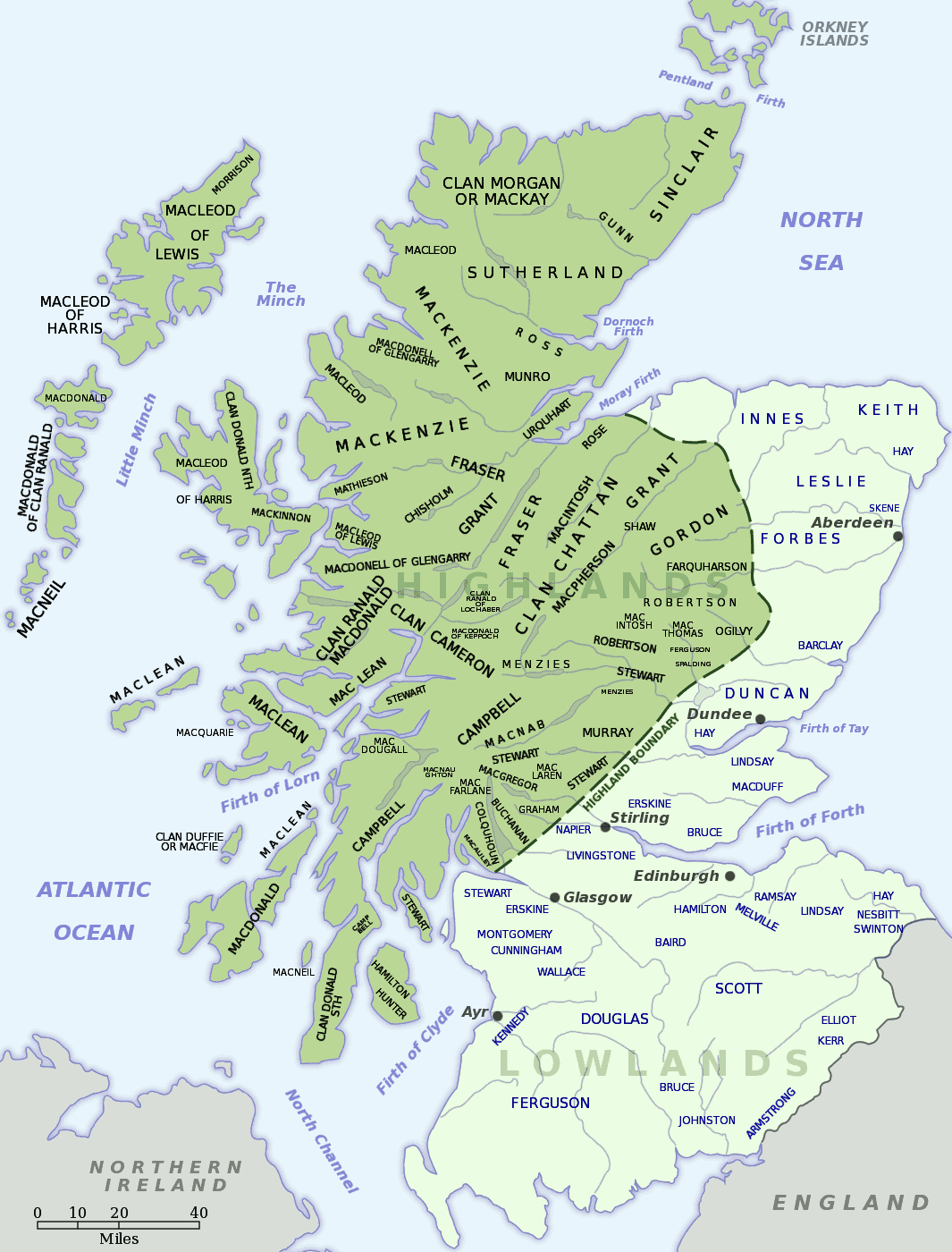
Died: 1246 in Dundonald Castle, Ayrshire, Scotland
Buried: 1246 in Paisley Abbey, Renfrewshire, Scotland
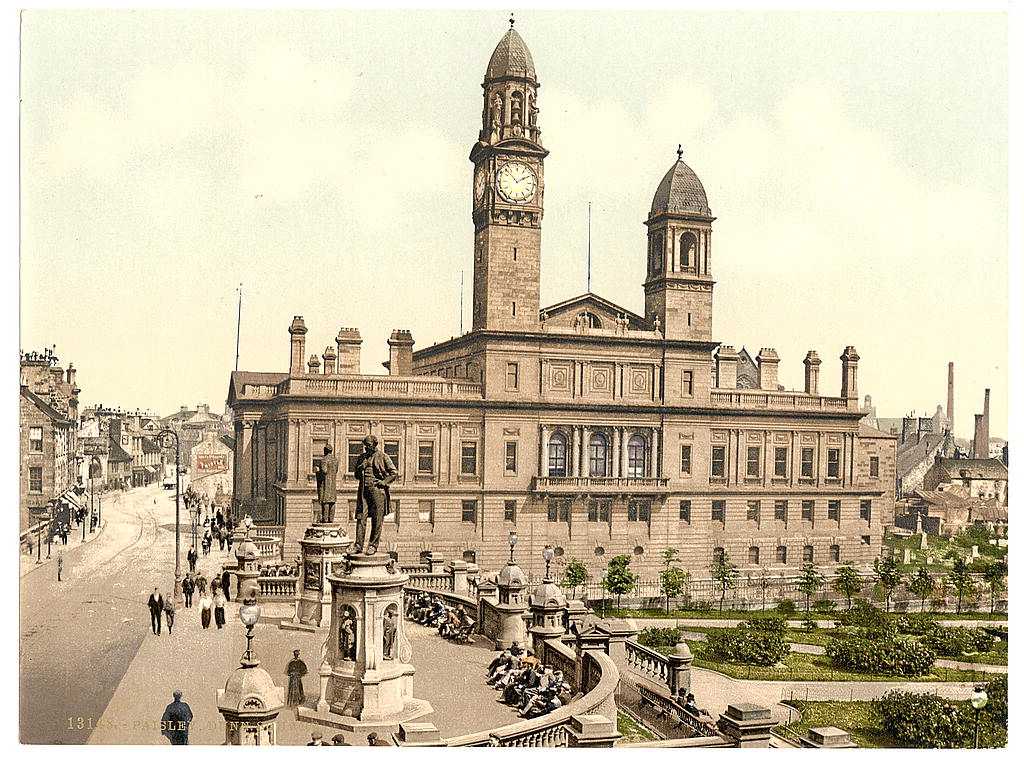
Dunn Square, Renfrewshire, Paisley Abbey, Scotland, circa 1900’s
My Maternal 19th. Great Grandfather, Sir Alan Stewart of Dreghorn
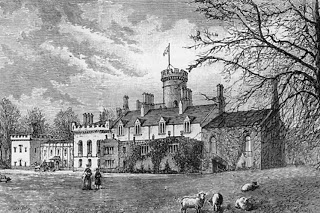
Dreghorn Castle, Ayrshire, Scotland
Name: Sir Alan Stewart of Dreghorn
Born: 1272 in Dreghorn, Ayrshire, Scotland
Married: 1320 in Darnley Castle, Renfrewshire, Scotland to Marion Cameron
Children: (4) Alexander, John, Elizabeth, and Walter Stewart
The son of John Stewart of Bonkyll and his wife Margaret de Bonkyll, Sir Alan fought for Robert the Bruce during the First War of Scottish Independence.
Sir Alan accompanied Edward Bruce to Ireland in 1315, during the latter’s attempt at the throne of Ireland. He was captured by the English in 1316 but was quickly ransomed. For his services to the King, Sir Alan was granted the lands of Dreghorn in Ayrshire.
Sir Alan Stewart was killed with his brothers, Sir James and Sir John Stewart, at the Battle of Halidon Hill, Berwick on Tweed, Northumberland, England on 19 July 1333.
With unknown mothers, Sir Alan Stewart had these children:
John Stewart of Cruikston and Darnley
Walter Stewart
Alexander Stewart of Darnley
Elizabeth Stewart – married John fitz Walter, son of Walter fitz Gilbert of Cadzow source: Wikipedia
Died: 19 July 1333 in the Battle of Halidon Hill, Berwick on Tweed, Northumberland, England
Burial: July 1333 in Scotland
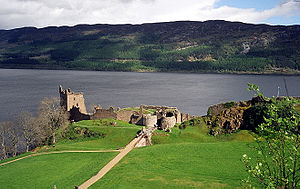
Battle of Halidon Hill, Berwick on Tweed, Northumberland, England
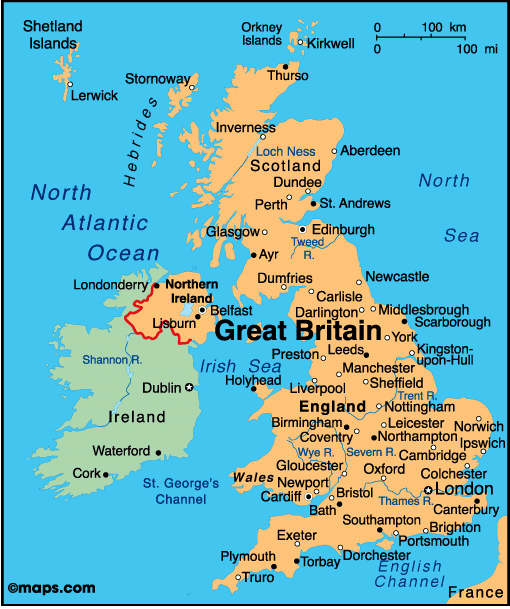
My Maternal 18th. Great Grandfather, Sir Alexander Stewart, Lord of Darnley and Crookston
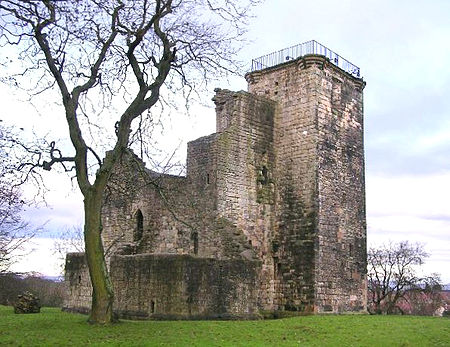
Crookston_Castle_Pollok Glasgow, Scotland, 2005
Name: Sir Alexander Stewart, Lord of Darnley and Crookston
Born: 1320 in Darnley, Renfrewshire, Scotland
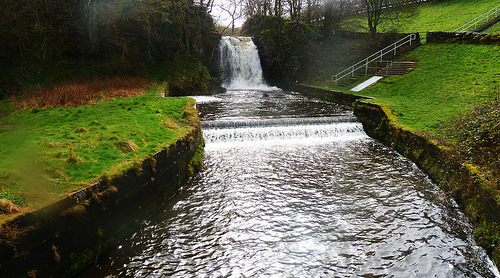
Waterfall and Dams to Darnley, Refrewshire, Scotland
Sir Alexander Stewart of Darnley (died 1374) was a Scottish nobleman.
Life – Alexander Stewart was the third son of Sir Alan Stewart of Dreghorn. By 1345 he had received a charter for lands at Cambusnethan from Robert II. Following the successive deaths of his elder brothers, he inherited their baronies of Cruikston and Darnley, and is referred to as Dominus of the two properties by 1371.
Sir Alexander had a son:
Sir Alexander Stewart of Darnley
https://en.wikipedia.org/wiki/Alexander_Stewart_of_Darnley_(d.1374)Crookston Castle is located in the Pollok area of south-west Glasgow, Scotland. The castle is located some 5 miles (8 km) south-west of the city centre, and 3 miles (5 km) east of Paisley, overlooking the Levern Water, just before its confluence with the White Cart Water.
Crookston is surrounded by a defensive ring-ditch that dates back to the 12th century when Sir Robert de Croc, who also gave his name to the village of Crookston, built a timber and earth castle. Remains of a chapel founded by de Croc in 1180 have been uncovered. Evidence of an even earlier fortification on the same site has also been found. The lands of Crookston were bought by Sir Alan Stewart in 1330, and passed to Sir John Stewart of Darnley, in 1361. The Darnley Stewarts replaced the early castle with the present stone structure around 1400. Wikipedia
Married: before 1342 in Darnley Castle, Renfrewshire, Scotland to Johanna Baird of Galston
Died: 26 August 1374 in Darnley Castle, Renfrewshire, Scotland
Burial: August 1374 in Scotland

My Maternal 17th. Great Grandfather, Sir Alexander Stewart, 5th. Laird of Darnley

Scotland
Name: Sir Alexander Stewart, 5th. Laird of Darnley
Born: 1342 in Darnley, Renfrewshire, Scotland

Loch Gelly – The town derives its name from this body of water
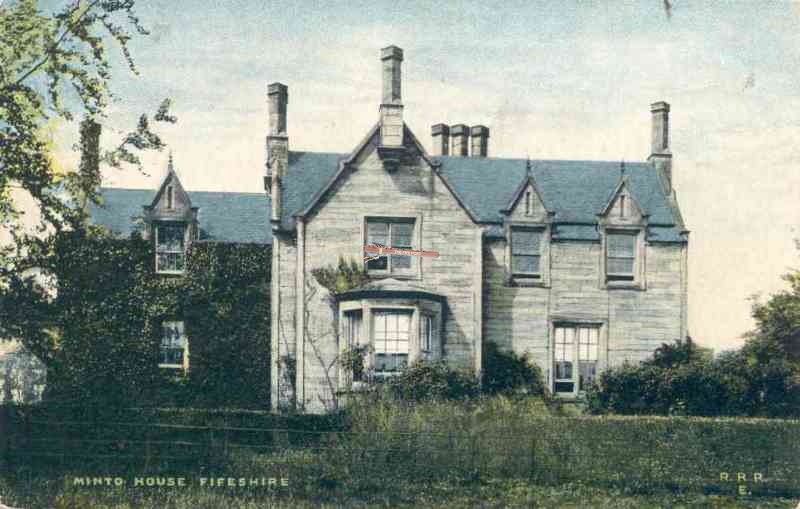
Minto House, Fifeshire, Scotland
Lochgelly (/lɒxˈɡɛli/ ![]() listen(help·info); Scottish Gaelic: Loch Gheallaidh) is a town in Fife, Scotland. It is located between Lochs Ore and Gelly to the north-west and south-east respectively. It is separated from Cowdenbeath by the village of Lumphinnans. Lochjelly, Fifeshire, Scotland. Wikipedia
listen(help·info); Scottish Gaelic: Loch Gheallaidh) is a town in Fife, Scotland. It is located between Lochs Ore and Gelly to the north-west and south-east respectively. It is separated from Cowdenbeath by the village of Lumphinnans. Lochjelly, Fifeshire, Scotland. Wikipedia
Married: 1360 in Minto, Lochjelly, Fifeshire, Scotland to Lady “Janet” Joanna Turnbull, of Minto, widow of David Hamilton of Cadzow
Birth Name
Sir Alexander Stewart Lord
Residence
Sir
Title of Nobility
fifth Laird of Darnley
Both The Peerage and Clan MacFarlance websites say that Alexander Stewart was married twice, first to Miss Turnbull and second to Janet Keith. This is correct.
By 1345 he had received a charter for lands at Cambusnethan from Robert II. Following the successive deaths of his elder brothers, he inherited their baronies of Cruikston and Darnley, and is referred to as Dominus of the two properties by 1371
Children: (6)
William, John, Alexander, James, Janet, and Robert Stewart
Death: 5 May 1404 at Darnley, Renfrewshire, Scotland
Burial: May 1404 in Dunkeld Cathedral, Dunkeld, Perthshire, Scotland
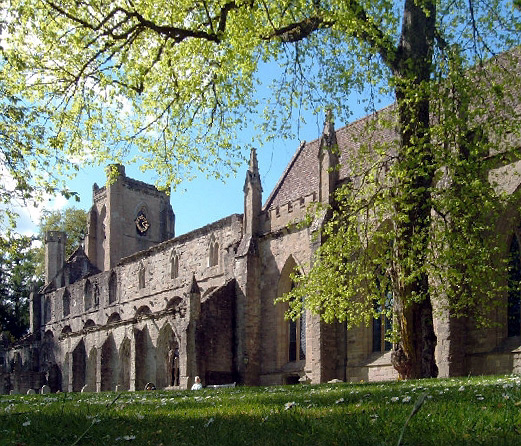
Dunkeld Cathedral, Dunkeld, Perthshire, Scotland
My Maternal 16th. Great Grandfather, Sir John Stewart, of Darnley, 1st. Lord of d’Augibny and Concressault

Aubigny-sur-Nère (France) : the “City of the Stuarts”
Aubigny-sur-Nère is a commune in the Cherdepartment in the Centre-Val de Loireregion of France. First known as Albinacum in Roman times, the commune was established as a royal town in 1189 by Philip II.
This is the location by which the Duke of Gordon gets his honorific title, as the Duke of Aubigny. In 1419, John Stewart of Darnley, a junior member of the House of Stuart, arrived in France with a large contingent of Scottish soldiers, to fight for Charles VII. He was awarded many titles, among them the Lordship of Aubigny. The family stayed here for 400 years. Wikipedia
Name: Sir John Stewart, of Darnley, 1st. Lord of d’Augibny and Concressault
Born: 1368 in Darnley Castle, Renfrewshire, Scotland
Married: 23 September 1406 in Argyll, Scotland to Elizabeth Lennox

Children: (4) Alan, John, and Alexander Stewart (Stuart)
Died: 12 February 1429 in Battle of the Herrings or Battle of Rouvray, Rouvray-Sainte-Croix, (Present département du Loiret), Duché d’Orléans (Present Région Centre), France
Buried: February 1429 in Chapel of Notre Dame, Orleans, France
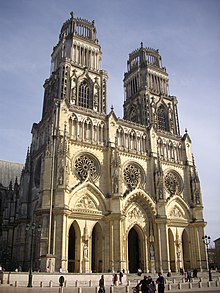
Sir John Stewart of Darnley, 1st Lord of Concressault and 1st Lord of Aubigny, Count of Évreux (c. 1368 – 1429) was a Scottish nobleman and prominent soldier during the Hundred Years War. He is buried at the Chapel of Notre Dame, Orleans, France
Sir John Stewart
Full coat of arms of John Stewart of Darnley first Lord of Aubigny
Birth Death 12 February 1429
Battle of the Herrings or Battle of Rouvray, Rouvray-Sainte-Croix, (Present département du Loiret), Duché d’Orléans (Present Région Centre), FranceBurial 1429 Chapel of Notre Dame Blanche, Orleans, France
My Maternal 18th. Great Grandmother, Lady Janet Stewart, of Darnley
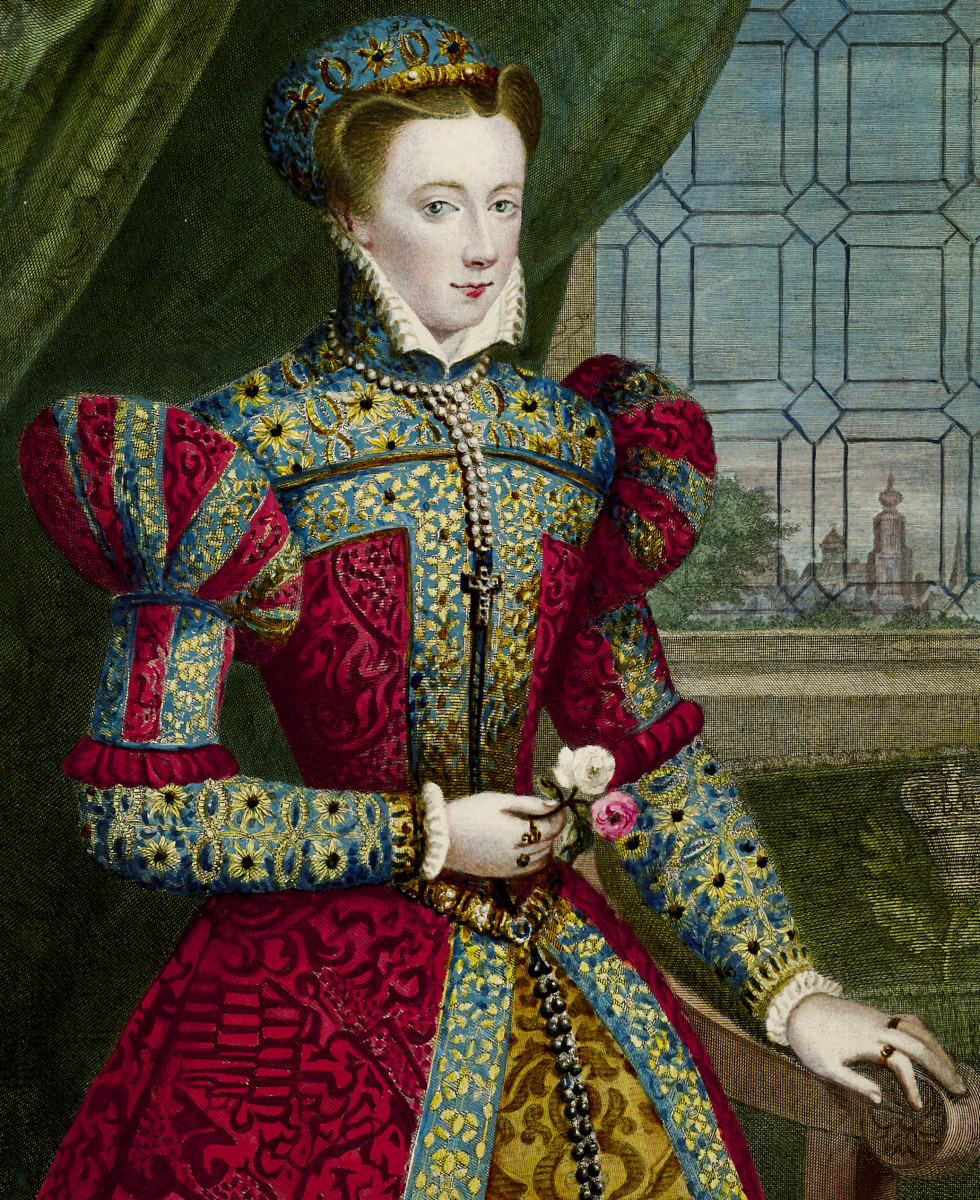
Mary Queen of Scots

Name: Lady Janet Stewart, of Darnley, daughter of Sir Alexander Stewart of Darnley and Lady Joanna Turnbull, of Minto
Born: 1370 in Darnley, Renfrewshire, Scotland
Married: 1385 in Lanarkshire, Scotland to Baron Thomas Somerville, 1st. Lord of Somerville
Janet Stewart of Darnley
Gender: Female Birth: 1370
Darnley, Renfrewshire, ScotlandDeath: 1407
Lanarkshire, ScotlandImmediate Family: Daughter of Sir Alexander Stewart of Darnley and Janet Turnbull of Minto
Wife of Sir Thomas Somerville, 1st Lord Somerville
Mother of Sir William Somerville, 2nd Lord Somerville; Thomas Somverville of Racklay; Mary Somerville and Giles Somerville
Sister of Sir William Stewart of Jedworth and Robert Stewart of Newtoun
Half sister of Sir John Stewart, 1st Seigneur d’Aubigny and Sir William Stewart of CastlemilkAdded by: Tom Caulley on May 21, 2008 Managed by: Henrik Nissen Sætness and 25 others Curated by: Source:
Ben M. Angelgeni.com The Stewarts of Darnley were descended from Sir John Stewart of Bonkyll, the second son of Alexander Stewart, 4th High Steward of Scotland . Their name is derived from Derneley, a barony in Eastwood parish, Renfrewshire one & a half miles east of Barrhead, present day Darnley, within the city of Glasgow. In 1356, Robert Stewart, High Steward of Scotland granted the barony to Sir John Stewart.
Like the Royal Stewarts, the Stewarts of Darnley used both the Stuart and the Stewart spelling of their surname.
Ancestors
Alexander Stewart, 4th High Steward of Scotland
John Stewart of Bonkyll (d.1298)
Alan Stewart of Dreghorn (d.1333)
Alexander Stewart of Darnley (d.1374)
Alexander Stewart of Darnley (d.1404)
John Stewart of Darnley (d.1429)
Alan Stewart of Darnley (d.1439)Stewart of Darnley was a notable Scots family, a branch of the Clan Stewart, who provided the English Stuart monarchs with their male-line Stuart descent, after the reunion of their branch with the royal Scottish branch, which led to the ultimate union of the two main kingdoms of Great Britain: England and Scotland.
In 1565 the House of Stewart of Darnley was re-united with the Royal House of Stewart when Henry Stuart, Lord Darnley married his first cousin, Mary, Queen of Scots, both being grandchildren of Margaret Tudor, daughter of King Henry VII of England, and hence both having claim to the English throne. The son of this union James VI of Scots succeeded to the throne of England as James I.
The later English Kings of the House of Stuart, from James I and Charles I onwards, were more properly members of the Stewart of Darnley branch, and all drew upon their feudal heritage in Lennox. source: Wikipedia

My Maternal 1st. Cousin 19 times removed, King James I of Scotland
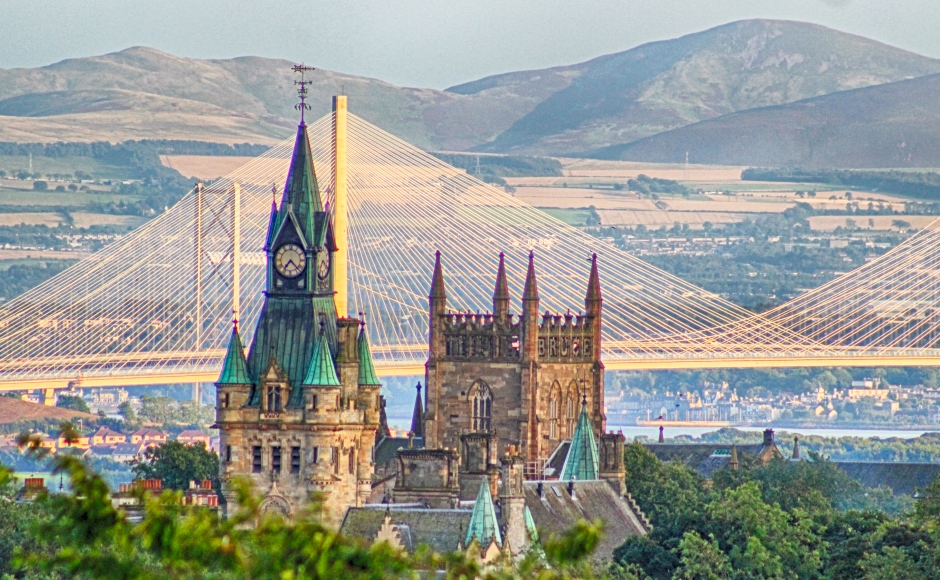
Dunfermline_Abbey_rooftop_Fife_Scotland
James I, king of Scots (1406 – 37) was the youngest son of Robert III and Annabella Drummond.
He was born on 25 July 1394 in Dunfermline Palace, Dunfermline, Fife, Scotland and by the time he was aged eight both of his elder brothers were dead.
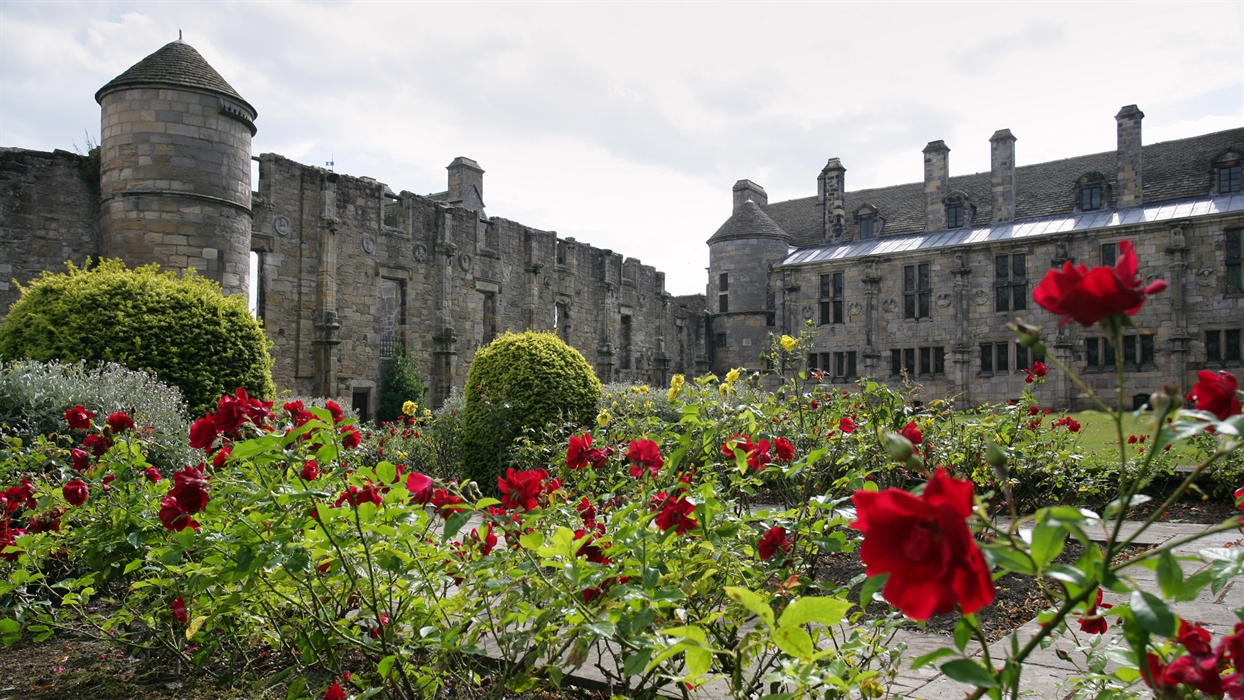
Falkland_Palace_Scotland
Robert died in infancy, and David, duke of Rothesay died in Falkland Castle while being detained by his uncle Robert Stewart, duke of Albany.
Although parliament exonerated Albany of involvement in Rothesay’s death, fears for James’s safety grew during the winter of 1405-6 and plans were made to send him out of harms way to France.
In February 1406 James in the company of forces loyal to Robert III clashed with those of the Albany-Douglas party forcing the prince to take temporary refuge on the Bass Rock in the Forth estuary.
He remained there until mid-March when a vessel was found bound for France. English pirates captured the ship on 22 March and delivered James to Henry IV of England.On 4 April Robert III died and the 12 year old prince, now the uncrowned king of Scots, began his 18 year detention. In captivity, James was educated at the English court where he developed respect for English methods of governance and for Henry V to the extent of serving in the English army against the French during 1420-1.
Albany’s son, Murdoch, held a prisoner in England following his capture in 1402 was traded by his father for Henry Percy, earl of Northumberland in 1416.
This furthered James’s suspicions of the intent of the Albany Stewarts.
By the time James was ransomed in 1424, Murdoch had succeeded his father King of Scots (25 July 1394 – 21 February 1437), was the youngest of three sons of King Robert III and Annabella Drummond and was born probably on 25 July 1394 in Dunfermline Palace. By the time he was eight years old, both of his elder brothers were dead—Robert had died in infancy, and David Stewart, Duke of Rothesay, died suspiciously in Falkland Castle while being detained by his uncle, Robert Stewart, Duke of Albany. Although parliament exonerated Albany, fears for James’s safety grew during the winter of 1405–6 and plans were made to send him to France.In February 1406, James and nobles close to his father clashed with supporters of Archibald, 4th Earl of Douglas, forcing the prince to take refuge on the Bass Rock in the Firth of Forth. He remained there until mid-March, when he boarded a vessel bound for France, but while off the English coast, pirates captured the ship on 22 March and delivered James to Henry IV of England. A few days later, on 4 April Robert III died, and the 12-year-old uncrowned King of Scots began his 18-year detention.
James was given a good education at the English court, where he developed respect for English methods of governance and for Henry V to the extent that he served in the English army against the French during 1420–1. Murdoch Stewart, James’s cousin and Albany’s son, a captive in England since 1402 was traded for Henry Percy, Earl of Northumberland in 1416. Eight more years passed before James was ransomed by which time Murdoch had succeeded his father to the dukedom and the governorship of Scotland.
James married Joan Beaufort, daughter of the Earl of Somerset on 2 February 1424 shortly before his release in April when they journeyed to Scotland. It was not altogether a popular re-entry to Scottish affairs, since James had fought on behalf of Henry V and at times against Scottish forces in France. Additionally, his £40,000 ransom meant increased taxes to cover the repayments and the detention of Scottish nobles as collateral. Despite this, James also held qualities that were admired. The contemporary Scotichronicon by Walter Bower described James as excelling at sport and appreciative of literature and music. Unlike his father and grandfather he did not take mistresses, but had many children by his consort, Queen Joan. The king had a strong desire to impose law and order on his subjects, but applied it selectively at times.
To bolster his authority and secure the position of the crown, James launched pre-emptive attacks on some of his nobles beginning in 1425 with his close relatives the Albany Stewarts that resulted in the execution of Duke Murdoch. In 1428 James detained Alexander, Lord of the Isles, while attending a parliament in Inverness. Archibald, 5th Earl of Douglas, was arrested in 1431, followed by George, Earl of March, in 1434. The plight of the ransom hostages held in England was ignored and the repayment money was diverted into the construction of Linlithgow Palace and other grandiose schemes.
In August 1436, James failed humiliatingly in his siege of Roxburgh Castle and then faced an ineffective attempt by Sir Robert Graham to arrest him at a general council. James was murdered at Perth on the night of 20–1 February 1437 in a failed coup by his uncle and former ally Walter Stewart, Earl of Atholl. Queen Joan, although wounded, escaped to the safety of Edinburgh Castle, where she was reunited with her son James II.”
other links:
http://www.britroyals.com/scots.asp?id=james1_scothttp://www.findagrave.com/cgi-bin/fg.cgi?page=gr&GRid=9393967
http://www.geneall.net/U/per_page.php?id=1461
http://histfam.familysearch.org/getperson.php?personID=I331&tree=EuropeRoyalNobleHous
http://histfam.familysearch.org/getperson.php?personID=I6191&tree=Nixon
http://www.nndb.com/people/765/000101462/
http://thepeerage.com/p10211.htm#i102105
Citations / Sources:
[S6] G.E. Cokayne; with Vicary Gibbs, H.A. Doubleday, Geoffrey H. White, Duncan Warrand and Lord Howard de Walden, editors, The Complete Peerage of England, Scotland, Ireland, Great Britain and the United Kingdom, Extant, Extinct or Dormant, new ed., 13 volumes in 14 (1910-1959; reprint in 6 volumes, Gloucester, U.K.: Alan Sutton Publishing, 2000), volume II, pages 238, 378. Hereinafter cited as The Complete Peerage.
[S11] Alison Weir, Britain’s Royal Families: The Complete Genealogy (London, U.K.: The Bodley Head, 1999), pages 230, 232. Hereinafter cited as Britain’s Royal Families.
[S20] Magna Carta Ancestry: A study in Colonial and Medieval Families, Richardson, Douglas, (Kimball G. Everingham, editor. 2nd edition, 2011), vol. 3 p. 568, 577.
[S21] #226 The Peerage of Scotland: Containing an Historical and Genealogical Account of the Nobility of That Kingdom, from Their Origin to the Present Generation (2nd edition, 1813), Douglas, Sir Robert, (2nd edition. 2 volumes. Edinburgh: A. Constable, 1813 NOTE: Caution should be taken with this peerage, and compared with other peerages to obtain accurate information about the families. Some of the lineages are confused, but can be used for supplemental information.), FHL book Q 941 D22d; FHL microfilm 1,440,956 items., vol. 1 p. 50.
[S22] #374 The Lineage and Ancestry of H. R. H. Prince Charles, Prince of Wales (1977), Paget, Gerald, (2 volumes. Baltimore: Geneal. Pub., 1977), FHL book Q 942 D22pg., vol. 1 p. 23.
[S323] Sir James Balfour Paul, The Scots Peerage: founded on Wood’s edition of Sir Robert Douglas’s The Peerage of Scotland (Edinburgh, Scotland: David Douglas, 1904), volume I, pages 18-19. Hereinafter cited as The Scots Peerage.
http://www.geni.com/family-tree/index/6000000038819867033#6000000038820346855
view all 14
James I of Scotland’s Timeline
1394
July 25, 1394
Birth of James
Dunfermline Palace, Dunfermline, Fife, Scotland
1424
December 25, 1424
Age 30
Birth of Margaret of Scotland, Dauphine de France
Perth, Perthshire, Scotland
1426
1426
Age 31
Birth of Isabella of Scotland, Duchess of Brittany
Perth, Perthshire, Scotland
1427
October 26, 1427
Age 33
Birth of Eleanor Stewart
Perth, Perthshire, Scotland
1428
1428
Age 33
Birth of Joan of Scotland, Countess of Morton
Perth, Perth, Scotland
1429
1429
Age 34
Birth of Mary Stewart, Countess of Buchan
Perth, Perthshire, Scotland
1430
October 16, 1430
Age 36
Birth of James II of Scotland
Holyrood Palace, Edinburgh, Scotland
October 16, 1430
Scottish monarch.Son of Robert III and Annabella Drummond. He reigned 1406-1437, though from 1406 til 1424, he was king in name only. When his father sent him away as a child for his own protection, he was captured by the English and held in the Tower of London for 18 years. During his imprisonment, he fell in love with Joan Beaufort, and the two were married on February 2, 1424 in Southwark, Greater London, England.
They had 8 children together. James returned to Scotland to find his country in chaos. He was formally crowned on May 21, 1424 at Scone. He took immediate action to regain his authority and control, including executing the Albany family, his fiercest opponents. He ruled with a firm hand, achieving numerous legal and financial reforms, including remodeling the Scottish parliament after its English counterpart, and renewing the Auld Alliance with France. His actions, although very effective, upset many, namely the descendents of his grandfather, Robert II’s second marriage (James was descended from the first marriage). Conflict arose between the two factions over who should be on the throne. The problems came to a head when James was murdered by his uncle Walter, Earl of Athol, at Friars Preachers Monastery in Perth. The king was 42. James was a handsome, accomplished man, being a poet, singer, and musician as well as a talented athlete, excelling at shotput and hammer throw.

My Maternal 16th. Great Scottish Grandfather, Sir John Stewart, of Balvenie, 1st. Earl of Atholl

Scotland
Name: Sir John Stewart of Balveny, 1st. Earl of Atholl, son of King James Stewart, I of Scotland and Queen Joan Beaufort of Scotland
Born: 12 October 1436 in Balvenie Castle, Dufftown, Banffshire, Scotland
Married: March 1450 in Perth, Perthshire, Scotland to Margaret Douglas, Countess of Galloway
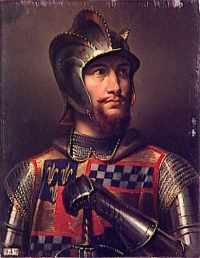
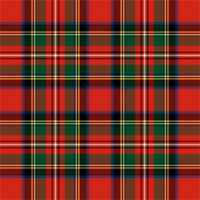
Sir John Stewart of Balveny, first Earl of Atholl of this line, born about 1440, styled ‘frater carnalis’ of King James II. He was created EARL OF ATHOLL in or before 1457, and is so designed in a truce with the English that year. Styled Earl of Atholl in a charter under the Great Seal, 25 March 1460, of the lordship of Balveny.
Another charter was granted to him by King James III., on account of near kinship and affection, of the earldom of Atholl and the lands with remainder to the heirs-male of his body, whom failing to the King, with the reddendo of a red rose to be delivered at Blair, 18 March 1481-82. He was sent in the expedition against John, Lord of the Isles, in 1475, and being victorious, adopted the motto ‘Furth fortune and fill the fetters.’
In 1484 he was one of the conservators of the peace with England, and in 1488 commanded in the army of James III. On that King’s death the Earl was imprisoned by King James IV., but was liberated before 1489, when he attended Parliament in Edinburgh. He died at the Laighwood, 15 September 1512, and was buried in Dunkeld Cathedral.
He married, first, Margaret Douglas, “the Fair Maid of Galloway,” only daughter and ultimate heiress of Archibald, fifth Earl of Douglas, Duke of Touraine.
She married, first, in 1444, William, eighth Earl of Douglas, and on his death his brother James, ninth Earl of Douglas. After the latter’s rebellion in 1455 she remained with him in England for a time, but about 1459 she is said to have repaired to King James II. entreating mercy, saying that she was forced to these ungodly nuptials against her will.
The marriage being dissolved she was married to Atholl, as her third husband, circa March 1459. He married, secondly, before 19 April 1475, Eleanor Sinclair, stated to be a daughter of William (Sinclair), Earl of Orkney and Caithness.
He had issue by both wives:-
1. John, second Earl.
2. Andree…
3. Jean…
4. Katherine…
5. Elizabeth…
6. Christian…
7. Margaret…
8. Elizabeth…
9. Jean…
10. Elizabeth…
11. Margaret…
12. Marjory…
13. Elspeth…
source: (The Scots Peerage)
Children with Margaret Douglas, Countess of Galloway : (4) Joanna, David, Janet, and Katherine Stewart
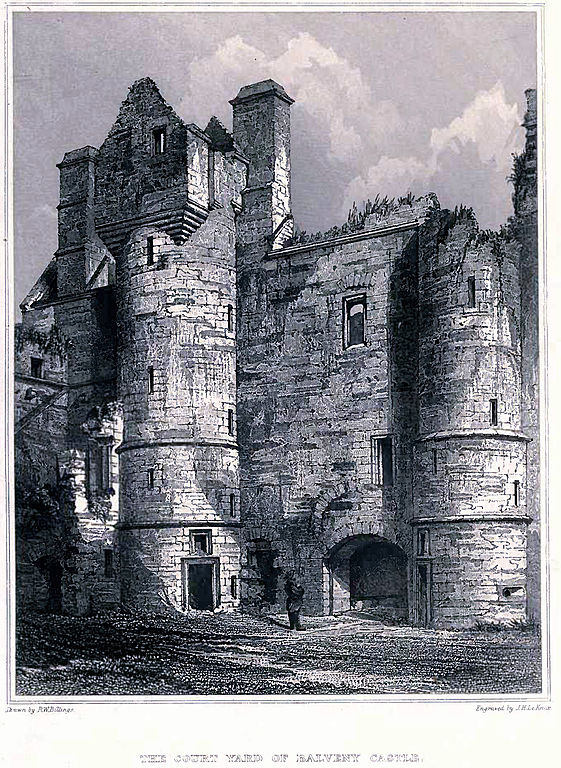
The Courtyard of Balvany Castle, Mortlach, Banffshire, Scotland
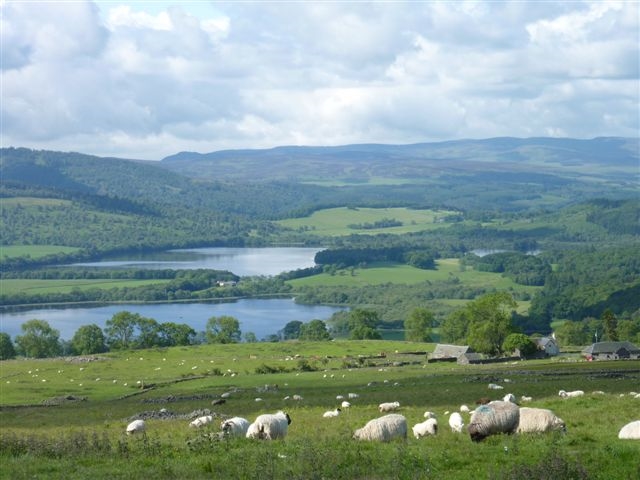
Laighwood, Dunkeld, Perthshire, Scotland
Death: 25 September 1512 in Laighwood Castle, Perth, Perthshire, Scotland

My Maternal 16th. Great Grandfather, Sir John Stewart, Lord Darnley, 1st. Earl of Lennox

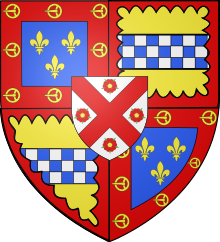
Arms of John Stewart, as Earl of Lennox
Name: John Stewart, 1st Earl of Lennox was known as Lord Darnley and later as the Earl of Lennox. Died: 1495
John Stewart was the son of Catherine Seton and Alan Stewart of Darnley, a direct descendant of Alexander Stewart, 4th High Steward of Scotland. His paternal grandmother was the daughter and co-heiress of Donnchadh, Earl of Lennox. Through his mother he was also a descendant of Thomas Randolph, 1st Earl of Moray, nephew of King Robert I of Scotland. Through his son Matthew Stewart, 2nd Earl of Lennox, Stewart was the great-great-great-grandfather of Henry Stuart, Lord Darnley, husband of his first cousin Mary, Queen of Scots and father of James VI, King of Scotland, who became James I, King of England. Stewart’s descendants have held the English throne ever since James I, as well as the royal houses of several European monarchies. source: Wikipedia


The Rt. Hon. Sir John Stewart, 1st Earl of Lennox
Also Known As: “John Stuart”, “Lord Darnley”, “Lord Of Darnley Stewart”
Birthdate: 1423
Birthplace: Darnley, Renfrewshire, Scotland
Death: 8 July 1495 (72)
Darnley, Renfrewshire, ScotlandPlace of Burial: 1495 Darnley, Renfrewshire, Scotland
Immediate Family: Son of Sir Alan Stewart of Darnley, Kt. and Catherine Seton
Husband of Margaret Montgomerie, Countess of Lennox
Father of Sir John Stewart, Seigneur d’Oison; Alexander Stewart, of Lennox; Sir Matthew Stewart, Earl of Lennox; Janet Stewart; Barbara MacFarlane and 10 others
Brother of Elizabeth Stewart; Alan Stewart, Lord of Cardonald; Alexander Stewart; Stewart and Marjory Stewart
Half brother of John Haldane, 3rd of Gleneagles; Janet Corsane; George Maxwell, of Carnsalloch; David Maxwell; Adam Maxwell, of Southbar and 3 others
Occupation: of Darnley, 1st Earl of Lennox
Source: Geni.com
My Maternal 20th. Great Grandmother, Princess Margaret Stewart, Countess of Angus and Mar,

Princess Margaret Stewart, daughter of Robert II King of Scotland & his first wife Lady Elizabeth Mure (-after 8 Jan 1401). m as his second wife, John Macdonald (-1387). He succeeded his father as Lord of the Isles. David II King of Scotland granted “Yle insulam de Geday insulam de Jura insulam de Colinsay” to “Johannem de Yle consanguineum nostrum” by charter dated 1344 [1379]. Robert II King of Scotland granted “insulam de Colowsay” to “Johanni del Yle…et…filis nostre Margarete sponse sue” by charter dated Jul 1376. source: Wikipedia
Name: Princess Margaret Stewart of Scotland, daughter of King Robert II Stewart, of Scots and Lady Elizabeth Mure, Rowallan, Ayrshire, Scotland

Dundonald Castle, Kyle, Ayrshire, Scotland
Married: 14 June 1350 in Dundonald Castle, Kyle, Ayrshire, Scotland to John “Eoin”MacDonald, 7th. Lord of the Isles
 Ardtornish Castle, Lochaline, Argyllshire, Scotland
Ardtornish Castle, Lochaline, Argyllshire, Scotland
Ardtornish Castle is situated in the grounds of the Ardtornish estate in Morvern, on the west coast of Scotland. It stands at the seaward end of a promontory which extends in a southerly direction into the Sound of Mull, approximately a mile south-east of the village of Lochaline, Highland. The castle was one of the principal seats of the high chiefs of Clan Donald from the early 14th to late 15th century. source: Wikipedia
It was at Ardtornish Castle that John of Islay, Lord of the Isles, 6th. chief of Clan Donald died in the 1380s and from where his funeral procession sailed through the Sound of Mull to the Isle of Iona.
His son and successor, Donald of Islay, Lord of the Isles granted charters dated at Ardtornish, at least two of which have survived, one in Latin and the other in Gaelic, and it was from here, according to tradition, that his galley fleet sailed on their way to transport the vassals of the Isles to the west coast of Ross-shire where they landed to begin their invasion in support of Donald’s claim to the Earldom of Ross which resulted in the indecisive Battle of Harlaw in 1411.
Also at Ardtornish Castle, John’s great-grandson, also named John of Islay, the fourth and last Lord of the Isles, met the commissioners of King Edward IV of England in 1461 to negotiate the well-known Treaty of Ardtornish-Westminster by which, in return for becoming loyal subjects of the King of England, John, his kinsman Donald Balloch of Dunnyvaig and the Glens and the forfeited Earl of Douglas were each to have a third of the kingdom of Scotland, with generous pecuniary rewards until the conquest of the kingdom had been completed.
The revelation of this treaty by the English government to the government of Scotland in 1474 resulted in the loss of the Earldom of Ross the following year. In the 1493 aftermath of the Raid on Ross, a decade or so later, John’s final forfeiture as Lord of the Isles followed. Following this, the lands of Ardtornish remained for a time in the hands of the Crown but were eventually given to the Clan MacLean chief of Duart Castle, who had already acquired large tracts of land in Morvern.
The castle was probably abandoned around the end of the seventeenth century, by which time Ardtornish and the other Morvern estates of the MacLeans had been devoured by the Campbell Earls of Argyll.
External links:https://web.archive.org/web/20070502015900/
http://www.highlandconnection.org/castles/ardtornish.html
http://www.ambaile.org.uk/en/item/item_photograph.jsp?item_id=34703
http://canmore.rcahms.gov.uk/en/site/22449/details/ardtornish+castle/
Death: 6 May 1410 in Ardtornish Castle, Lochaline, Argyll, Scotland
Buried: 1410 in Iona Abbey, Isle of Iona, Argyll, Scotland
Lady Margaret Stewart, Princess of Scotland, Countess of Angus and Mar
Gender: Female Birth: 1336
Dundonald Castle, Kyle, Ayrshire, ScotlandDeath:
Burial:
6 May 1410 (72-88)
Ardtornish Castle, Lochaline, Argyll, Scotland
1410 Iona Abbey, Iona, Argyll, Scotland
Immediate Family: Daughter of Robert II, king of Scots and Elizabeth Mure of Rowallan
Wife of Lord Alexander MacAlistair and Eoin Carrach MacDomhnaill, 7th Lord of the Isles Mother of Ian ‘John Mór’ Macdonald, Lord of the Isles; Donald MacDonald, of Harlaw, 8th Lord of the Isles; Anna MacDonald, of the Isles; Alexander, Lord of Lochaber; Angus MacDonald and 1 other
Sister of Robert III, King of Scots; Walter Stewart, Earl of Fife; Robert Stewart, 1st Duke of Albany; Alexander Stewart, 1st Earl of Buchan; Isabella Stewart, Princess of Scotland and 7 others
Half sister of Maria Danielston (Stewart); Sir John ” The Red” Stewart, of Dundonald; James Stewart, of Kinfauna; Thomas Stewart, Dean of Dunkeld; Walter Stewart, 1st Earl of Atholl and 5 others
Added by: Sylvia del Carmen Bain Rojas on October 19, 2007
Managed by: James Fred Patin, Jr. and 33 others Curated by: Erica Howton source: geni.com
Sources:
Historic Scotland – DUNDON…
Added by Christopher Lee Empey
Alexander Progenitors-part …
Added by Christopher Lee Empey
Full text of “Memorials of …
Added by V
second wife of John, Lord of the Isles
daughter of King Eobert (Robert) II spouse of John, Lord of the Isles
Full text of “Alexander fam…
Added by V
HOBBS/ALEXANDER CLANS (Joe …
Added by V

My Maternal 29th. Great Grandfather, Vicomte Hamon de Dinan, Bretagne, France
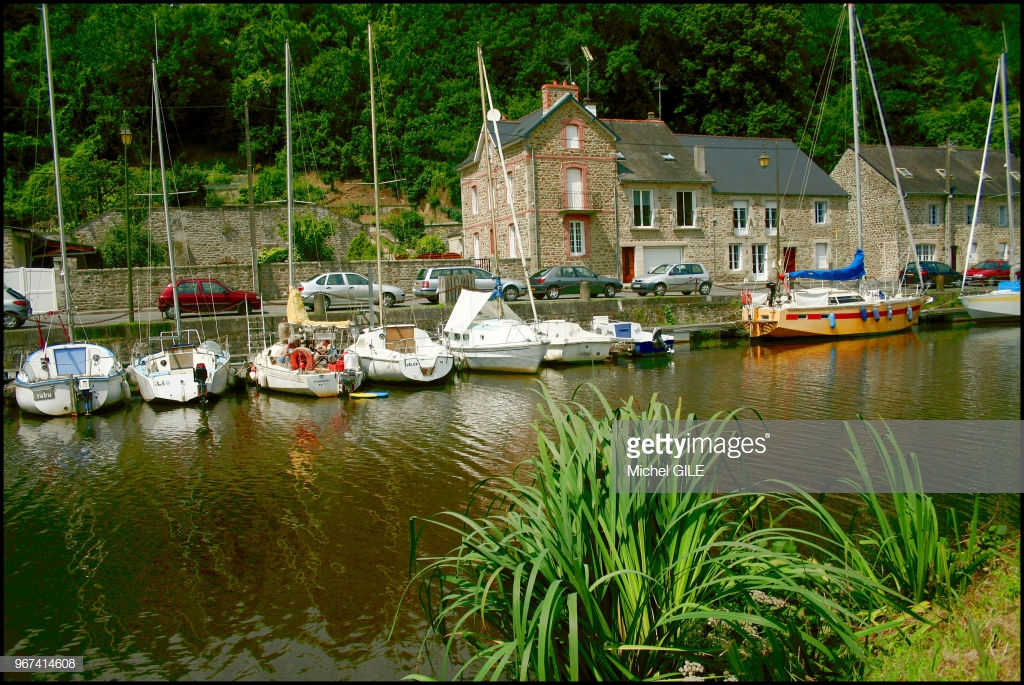
Dinan et la rivière la Rance, vallée de la Rance, Côtes d’Armor, France
Name: Vicomte Hamon “Aimon” de Dinan
Birth: 1 January 973
Dinan, Ille-et-Vilaine, Bretagne, France
Death: 15 November 1031 (49-65)
Dinan, Cotes d’Armor, Bretagne, France
Dinan is a town in Brittany, northwest France. It’s known for its medieval ramparts, cobblestone streets and half-timbered houses. Dinan Castle has a 14th-century keep and the Tour du Coëtquen, a 15th-century artillery tower. The grand, Gothic-style Saint-Malo Church has vibrant stained-glass windows. The Clock Tower offers panoramic views. The Rail Museum has model railways, plus posters and signal boxes.
Alternate Name
Birth Name
Haimon de LEON
Alternate Name
Birth Name
Hamor de Dinan
Alternate Name
Birth Name
Haimon Le Vicomte De Dinan
Alternate Name
Birth Name
Haimon Ou Aymon De Dinan
Alternate Name
Birth Name
Hamon de Dinan I
Alternate Name
Birth Name
Haimon De Dinan
Alternate Name
Birth Name
Hamon de Dinan Viceroy
Alternate Name
Birth Name
Hamon de Dinan Vicompte de Dinan
Alternate Name
Birth Name
Hamon De Dinan Viscount
Alternate Name
Birth Name
Vicomte Hamon Of Dinham
Alternate Name
Birth Name
Hamon Vicomte de Dinan
Alternate Name
Birth Name
Vicomte de Dinan
Alternate Name
Birth Name
Haman or Hamor de Dinan
Alternate Name
Birth Name
Hamor de Dinan
Alternate Name
Birth Name
Haman II de Dinan
Alternate Name
Birth Name
Vicomte Hamon de Dinan
Alternate Name
Also Known As
Aymon de THOUARS
Alternate Name
Also Known As
Haimon de Domnonee Comte de Domnonee
Alternate Name
Also Known As
Aimon de Dinan I
Alternate Name
Also Known As
Seigneur De Chateau Du Lorie Aimon
Alternate Name
Also Known As
Vicomte de Dinan Hamon de Dinan
Alternate Name
Also Known As
Haimon
Custom Event
Title
Viscount of Dinan
Custom Event
Occupation
Seigneur
Immediate Family:
Husband of Hildeburge de Bellême
Married: about 995 in France
Father of Robert Fitz Hamon; Flaald, seneschal of Dol; Geoffroi I, vicomte de Dinan; Hamon de Dinan; Seigneur Joscelin de Dinan, of Dinan and 8 others
Added by: Laurie Bosley on August 7, 2007
Managed by: Loïc GEFFRIER and 53 others
Curated by: Pam Wilson Source: geni.com
Sources
Vicomtes de Dinan at Medeival Lands.
His parents are unknown but he seems to have been a cadet of the Dukes of Brittany.
Some sources, with doubtful reliability, make him a son of Fratmaldus “the Seneschal”.
Other sources have different guesses about his possible father.
This is a Pedigree for the Archbishops of Dol in Brittany France
‘The earliest known person the lineage traces back to be a man named Hamo I, Viscount of Alet, France’ who was born between 963-1023 AD.
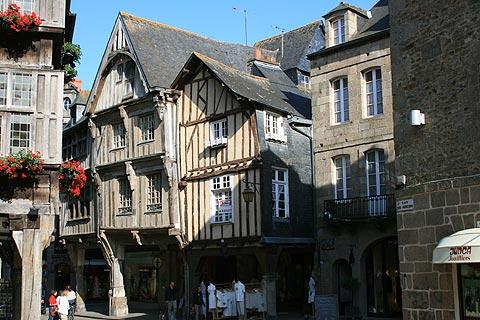
Photo of Dinan in Cotes-d’Armor, France
My Maternal 28th. Great Grandfather, Flaad seneschal, Hereditary Steward of Dol
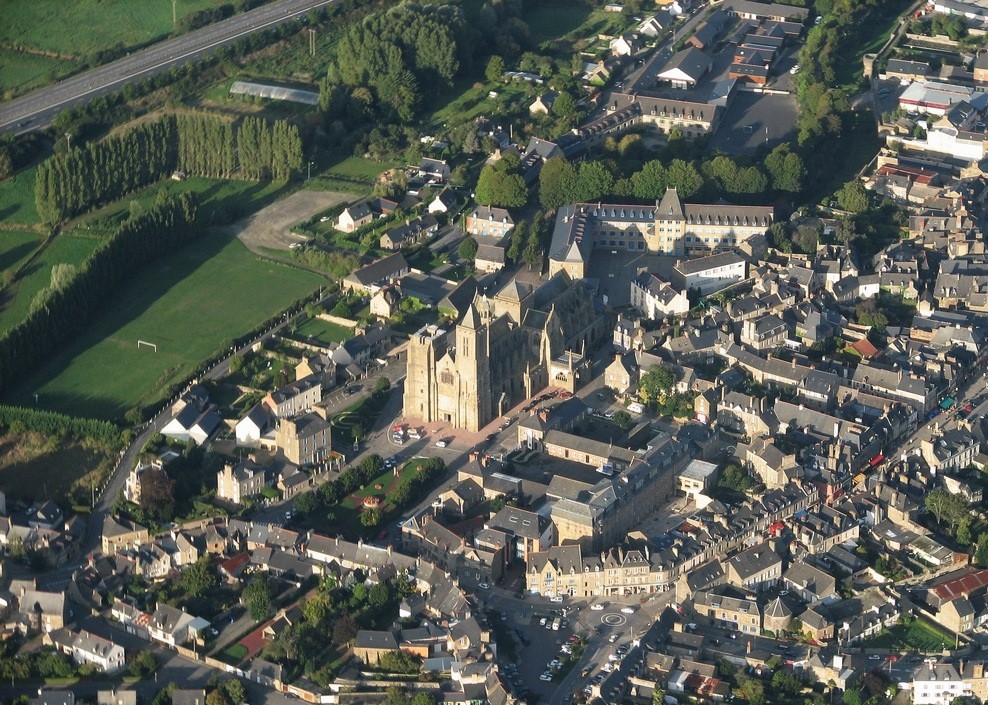
Name: Flaald, seneschal de Dol, Hereditary Steward of Dol
Birth: circa 1005
Dol, Ille-et Vilaine, Bretagne, FranceDeath: circa 1064 (51-67)
Saint-Malo-en-Donziois, Nievre, Burgandy, FranceImmediate Family:
Son of Aimon I, viscount of Dinan and Hildeburge de Bellême
Husband of NN possible daughter of Crinan & Bethoc of Atholl, Princess of Scotland and Constance, de DolMarried: about 1020 in to Constance, de Dol
Father of Alain “Dapifer” fitz Flaald, Seneschal of Dol
Brother of Robert Fitz Hamon; Geoffroi I, vicomte de Dinan; Hamon de Dinan; Seigneur Joscelin de Dinan, of Dinan; Ruellan I, seigneur de Dol and 7 othersHalf brother of Aubert II Le Riche; Robert Brochard de Château-du-Loire, I; Gervais de Bellême, archevèque de Reims; Avesgaud de Château-du-Loire; Guillaume de Château-du-Loire and 1 other
Added by: Gretchen Renee Johnson on December 30, 2011
Managed by: Jessica Morgan and 30 others
Curated by: Pam Wilson, CuratorSource: geni.com
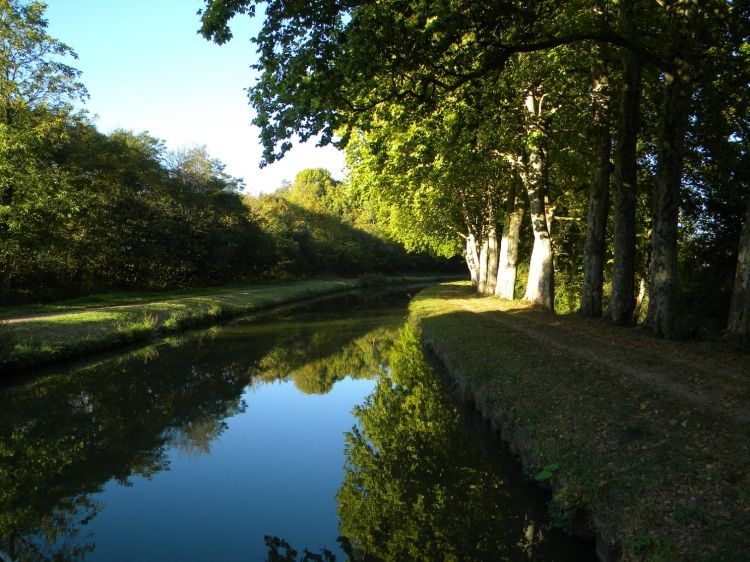
My Maternal 27th. Great Grandfather, Alain “Dapifer” fitz Flaad, Seneschal of Dol, en Bretagne, France
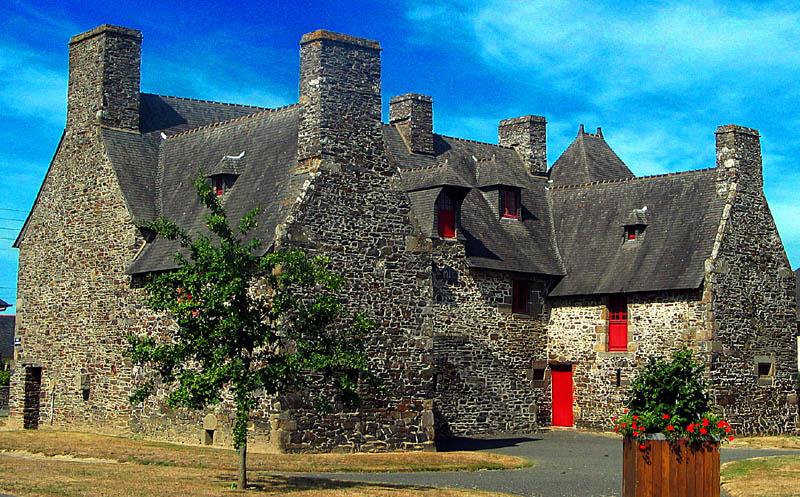
Name: Alain “Dapifer” fitz Flaald Seneschal of Dol
Birth: 1020 in Dol De Bretagne, Ille-et-Vilaine, Bretagne, France
Married: about 1050 to Margaret of Atholl, Scotland “St. Margaret”
Children: (4)
Flaald Fitz Flaald Seneschal de Dol en Bretagne
1050–1080 • 9HQ6-6GH
Rhiwallon Fitz Alan Abbott of St. Floren
1052–Deceased • LB2Q-RH1
Alain (Alan) Seneschal & Dapifer
1056–1097 • LB2Q-RHB
Rivallon (Rhiwallon) Monk of Mezouit
1058–1082 • L8BQ-6CR
Death: 1080
Jerusalem, Palestine, Holy Land
Alternate Name:
Also Known As
Dapifer
Also Known As
Alan Dapifer of Dol FITZ FLAALD
Dol-de-Bretagne (Breton: Dol, Gallo: Dóu), cited in most historical records under its Breton name of Dol, is a commune in the Ille-et-Vilaine département in Brittany in northwestern France.
Dol-de-Bretagne is reputed to be the origin of the royal House of Stewart who became the monarchs of Scotland and later England and Ireland; a plaque in Dol commemorates that origin.
The Stewart monarchs descend from Alan the Seneschal of the Bishop of Dol. His son, Flaad Fitzalan and his son Alan, arrived in Britain at the request of Henry I, King of England. Flaad’s grandson, Walter Fitzalan, was appointed the 1st Steward of Scotland by David I of Scotland. Malcolm IV of Scotland later confirmed the honour bestowed by David and made the office of Steward of Scotland hereditary in Walter’s family.
In the fourteenth century, Walter Stewart (so named for his family’s hereditary possession of the office of High Steward of Scotland), a descendant of Walter Fitzalan, married Marjorie Bruce, daughter of King Robert I of Scotland. Their son became King Robert II, and their descendants the royal House of Stewart. source: Wikipedia
Alt. Birth
1025
Dol-de-Bretagne, St. Malo, Bretagne, France
Alt. Death
1080
Dol, St. Malo, Bretagne, France
Alt. Death
1080
Jerusalem, Palestine, The Holy Land
Title
Seneschal of Dol

Alain “Dapifer“ (c.1024-after 1080), Seneschal of Dol. He is now known to have scion of the seneschals of Brittany, but he was traditionally thought to have been a son of Fleance MacAlpin, Thane of Lochaber.
In MacBeth, Shakespeare has the witches tell Banquo that he will be the father of kings. The play was written for James I (VI) of England and Scotland, who as a descendant of Alan Dapifer was thought to have been a descendant of Banquo.
Flaald, Hereditary Steward of Dol “Flaald or Fleald; living 1080; active on the Welsh border c.1101. [Burke’s Peerage]
FLAALD Dapifer, the second son of ALAN “Dapifer”, occurs as “Float filius Alani dapiferi” at the dedication of Monmouth Priory 1101. He is also mentioned as brother of Alan, the other “Dapifer.”
Children: (1) Alan Fitz Flaald, feudal Baron of Oswestry, Shropshire, England
My Maternal 21st. Great Grandfather, Sir Alexander Stewart, 4th. High Steward of Scotland
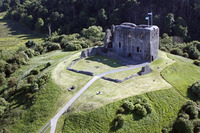
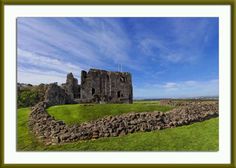
Dundonald Castle, Irvine, Ayrshire, Scotland
Name: Alexander Stewart (d. 1283), also known as Alexander of Dundonald, 4th. hereditary High Steward of Scotland from his father’s death in 1246.
Born: 1 May 1216
Cambusnethan, Lanarkshire, Scotland
Married: 1242 in Dundonald Castle, Irvine, Ayrshire, Scotland to Lady Jean MacRory, Countess of Bute and Arran, daughter of James MacRory and Bethoc Beatrix Nic Gille Crist
Death: 16 June 1283
Dundonald Castle, Irvine, Ayrshire, Scotland
Burial: June 1283
Paisley Abbey, Renfrewshire, Scotland

A son of Walter Stewart, 3rd High Steward of Scotland by his wife Bethóc, daughter of Gille Críst, Earl of Angus, Alexander is said to have accompanied Louis IX of France on the Seventh Crusade (1248–1254).
In 1255 he was one of the councillors of King Alexander III, though under age. He was the principal commander under King Alexander III of Scotland at the Battle of Largs, on 2 October 1263, when the Scots defeated the Norwegians under Haakon IV. The Scots invaded and conquered the Isle of Man the following year, which was, with the whole of the Western Isles, then annexed to the Crown of Scotland.
Alexander Stewart, 4th High Steward of Scotland married Jean Macrory, heiress of the Isles of Bute and Arran, daughter of James (who with his father and brothers were killed in 1210 by the men of Skye), son of Angus, Lord of Bute & Arran (younger son of Somerled, King of the South Isles).
They had the following children:
James Stewart, 5th High Steward of Scotland (c. 1260-1309)
Sir John Stewart of Bonkill, Berwickshire (d. 22 July 1298), described as the “second son” who married the Bonkill heiress, had seven sons and one daughter, and was killed in the Battle of Falkirk. Agnatic ancestor of British kings.Andrew Stewart (a.k.a. Andrew Steward) Esq.,third son of Alexander Stewart. Married the daughter of James Bethe. Father of Sir Alexander ‘the fierce’ Steward and direct ancestor of Oliver Cromwell.
Great uncle of King Robert II.
Elizabeth Stewart, (d. before 1288) Married Sir William Douglas the Hardy, Governor of Berwick-upon-Tweed. She was the mother of the Good Sir James Douglas.Hawise Stewart, married John de Soulis, brother of the Lord of Liddesdale.
Through his eldest son James, Alexander was a great-grandparent of King Robert II, the first Stewart to be King of Scots, and thus ancestors of all subsequent Scottish monarchs and the later and current monarchs of Great Britain.Through his second son John, Alexander was a patrilineal ancestor of Henry Stuart, Lord Darnley, and of the Stuart monarchs of Scotland and England from Darnley’s son James VI and I onwards. source: Wikipedia
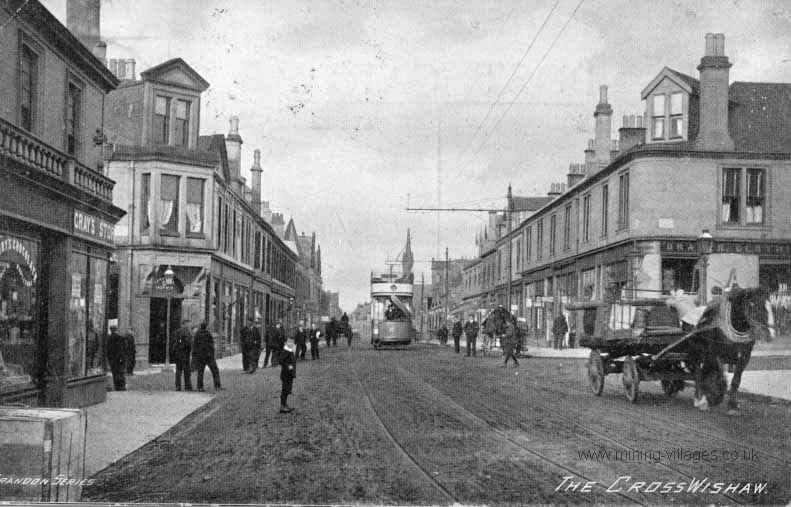
Cambusthenan, Lanarkshire, Scotland
My Maternal 26th. Great Grandfather, Flaald fitz Flaald, Seneschal de Dol en Bretagne, France

Dol-de-Bretagne France
Name: Flaald fitz Flaald, Seneschal de Dol en Bretagne
Gender: MaleBirth: circa 1050
Dol-de-Bretagne, Bretagne, FranceDeath: about 1080
Monmouth, Monmouthshire, WalesPlace of Burial: about Dol, Bretagne, France
Immediate Family:
Son of Alain “Dapifer” fitz Flaald, Seneschal of Dol and N.N. (unknown)Husband of Daughter Of Ava MacAlpin, (domina Norton)
Married: 1075 in Dol-de-Bretagne, Bretagne, France
Father of Alan FitzFlaald, Sheriff of Shropshire and Sibil fitz Flaald, of Dol
Added by: Conrad Kamaha’o Herrmann on May 23, 2007
Managed by: James Fred Patin, Jr. and 151 others
Curated by: Jason Scott Wills
source: geni.com

Old House in Dol-de-Bretagne France
My Maternal 25th. Great Grandfather, Alan Fitz Flaad, Baron of Oswestry
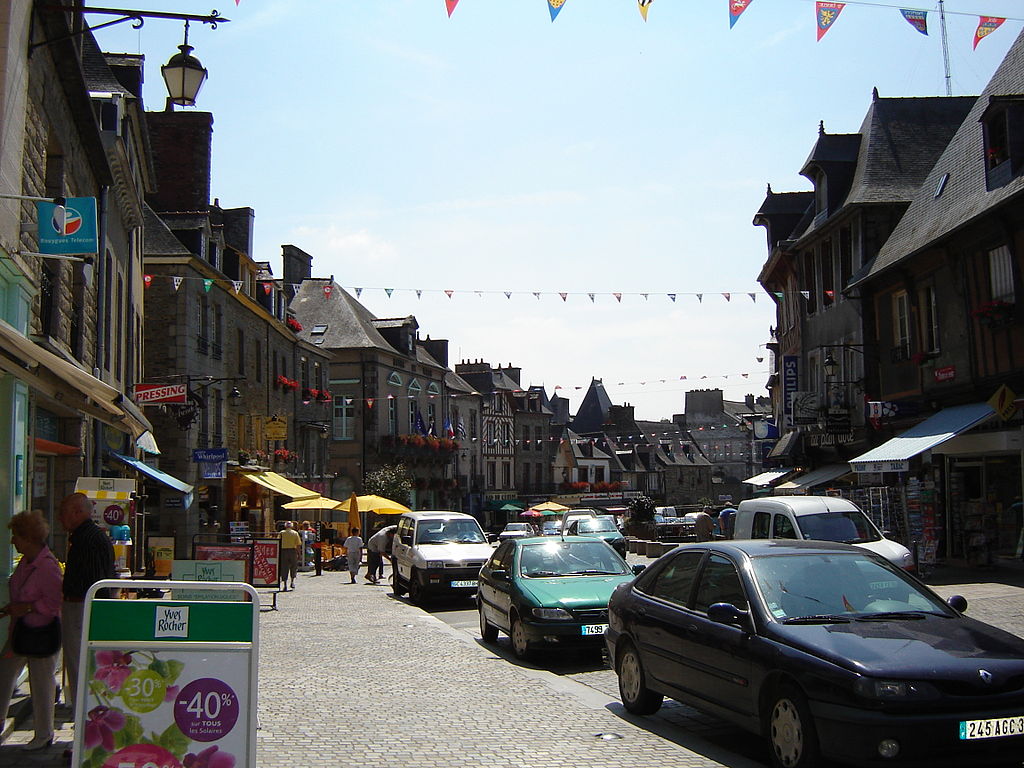
La Grande Rue (main street), Dol-de-Bretagne, Ille-et-Vilaine, Bretagne, France
Dol-de-Bretagne is reputed to be the origin of the royal House of Stewart who became the monarchs of Scotland and later England and Ireland; a plaque in Dol commemorates that origin. The Stewart monarchs descend from Alan the Seneschal of the Bishop of Dol. His son, Flaad Fitzalan and his son Alan, arrived in Britain at the request of Henry I, King of England. Flaad’s grandson, Walter Fitzalan, was appointed the 1st Steward of Scotland by David I of Scotland. Malcolm IV of Scotland later confirmed the honour bestowed by David and made the office of Steward of Scotland hereditary in Walter’s family. In the fourteenth century, Walter Stewart (so named for his family’s hereditary possession of the office of High Steward of Scotland), a descendant of Walter Fitzalan, married Marjorie Bruce, daughter of King Robert I of Scotland. Their son became King Robert II, and their descendants the royal House of Stewart. source: Wikipedia
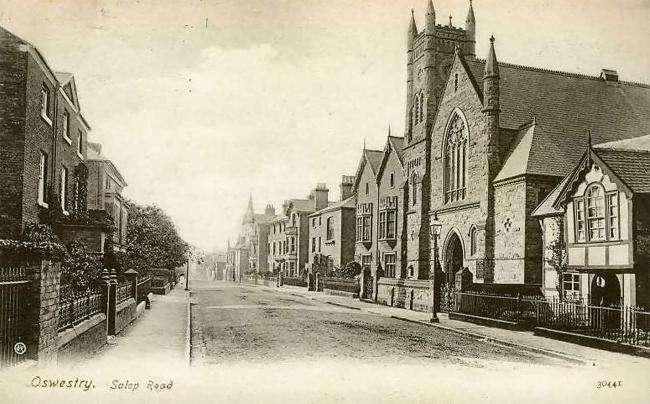
Oswestry, Shropshire, England
Name: Alan Fitz Flaad, Breton Knight, Baron of Oswestry
Born: 1078 in Dol, St. Malo, Ille-et-Vilaine, Bretagne, France
Married: Avelina de Hesdin domina Norton in about 1094 in England
Children: (7) Adeline, Flaad, William, Walter, Jordan, Simon, and Sibil
Died: 11 November 1114 in Dol, St. Malo, Ille-et-Vilaine, Bretagne, France
Buried: 1114 in Shropshire, England
Sheriff of Shropshire
*****************************************************
Received the Barony of Swaldestre from William the Conqueror for participation in the Conquest.Acceded: about 1070, Oswestry, Shropshire, England
Notes: having participated in the Conquest, obtained by the gift of King William the Conqueror, the barony and castle of Oswaldestre, Salop, and Milcham, Norfolk, some of which belonged to Meredith, Prince of Powys ap Bleddyn, King of Powys. He received the shreivalty of Shropshire from King Henry I. While his parentage is more or less obscure, there is evidence to show that Flaald, his father, lived in Brittany and was a brother of Alain, seneschal of Dol, descended from the old Armonican counts of Dol and Dinan.
Alain Fitz Flaald was also the father or grandfather of William Fitzalan, steward to David I, King of Scotland, ancestor of the Stuarts, kings of that country.
Alain Fitz Flaald was also the father of William Fitzalan, to whom Henry II gave in second marriage Isabel De Say, baroness of Clun, the greatest heiress of Shropshire.
He was ancestor of John Fitzalan, who married Isabel, sister and co-heiress of Hugh d’Albigny. Upon a division of Hugh’s property at his death in 1243, the castle of Arundel was assigned to John, son of the aforementioned John and Isabel, who thus became the first Earl of eventually passed to Mary, daughter and heiress of Henry Fitzalan, who carried it, together Arundel of the Fitzalan line. This property with the earldom and the barony of Maltravers, to her husband Thomas Howard, Duke of Norfolk, in which family it still remains. Alain Fitz Flaald and his wife Adeline were benefactors to priory of Castle Acre, early in the reign of Henry I.
source: The Complete Peerage vol.V, pp.391-392.
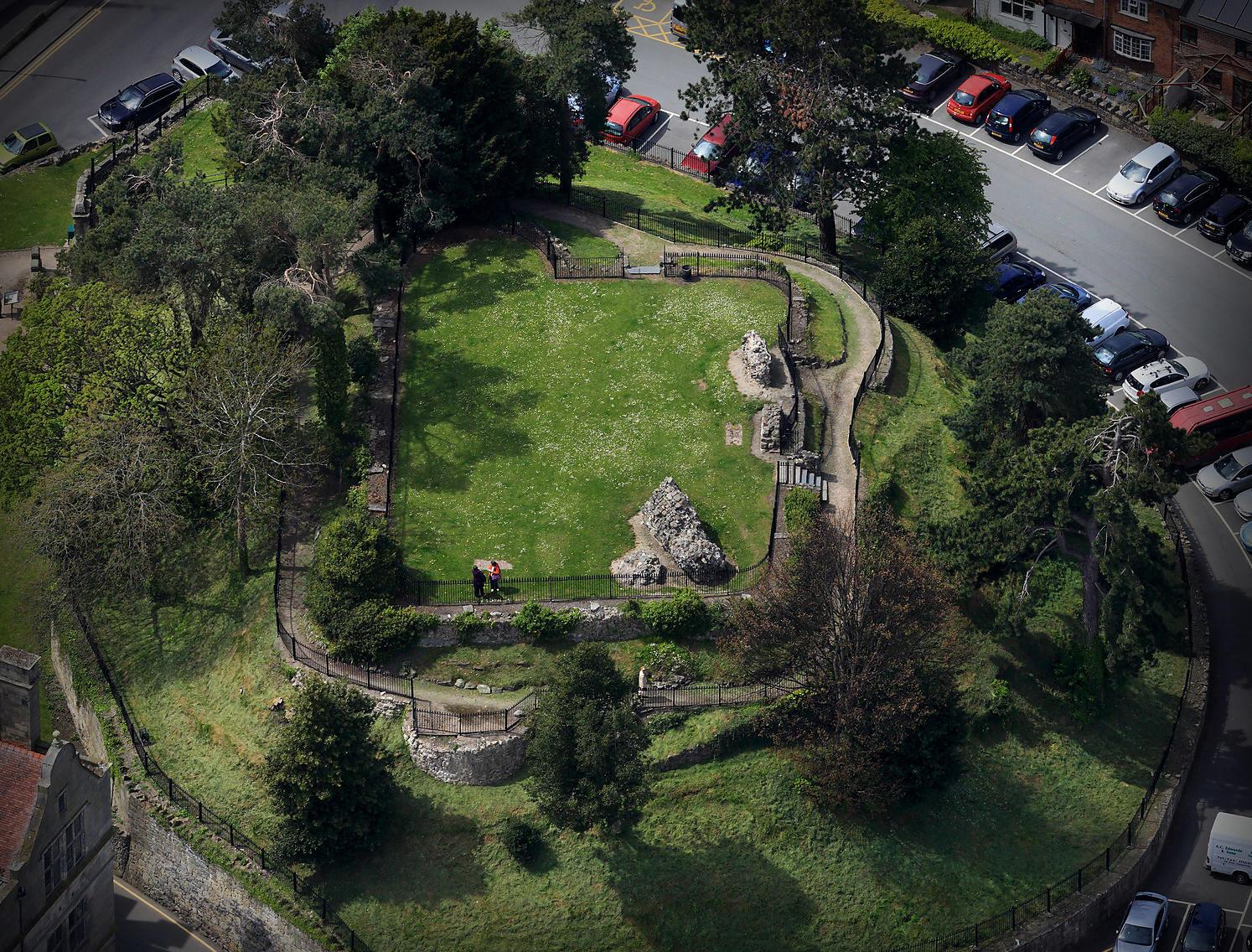
My Maternal 24th. Great Grandfather, Walter Fitz Alan, 1st. High Steward of Scotland

Oswestry, Shropshire, England
Name: Walter FitzAlan, 1st. High Steward of Scotland
Walter’s name and title as it appears in a royal charter to Holyrood Abbey: “Walter filio alani Dapifero”.
Successor: Alan FitzWalter, 2nd. High Steward of Scotland

Oswestry Castle, Oswestry, Shropshire, England
Born: 1106 in Oswestry Castle, Oswestry, Shropshire, England
Died: 1177 in Melrose Abbey
Buried: 1177 in Paisley Priory, Paisley, Renfrewshire, ScotlandNoble family FitzAlan family
Spouse(s) Eschina de Molle DeLondoniis
Married: 1126 in Paisley Abbey, Renfrewshire, England
Children: David FitzAlan, Margaret FitzWalter, Emma FitzAlan, Simon FitzAlan, William FitzAlan, Alan FitzWalter, 2nd. High Steward of Scotland
Father: Alan FitzFlaald
Mother: Avelina de Hesdin
Walter FitzAlan (born c.1110; died 1177) was a twelfth-century Scottish magnate and Steward of Scotland. He was a younger son of Alan Fitz Flaad and Avelina de Hesdin.
In about 1136, Walter entered into the service of David I, King of Scotland. He became the king’s dapifer or steward in about 1150, and served as such for three successive Scottish kings: David, Malcolm IV, and William I. In time, the stewardship became hereditarily-held by Walter’s descendants.
Walter started his career as a minor English baron. Upon arriving in Scotland, however, he received a substantial grant of lands from his Scottish sovereigns. These included the western provincial lordships of: Mearns, Strathgryfe, Renfrew and North Kyle. The caput of Walter’s holdings is uncertain, although there is reason to suspect it was either Dundonald Castle or Renfrew Castle. Walter was a benefactor of several religious houses, and was the founder of Paisley Priory.
There is reason to suspect that Walter took part in the Siege of Lisbon against the Moors in 1147. He probably assisted Malcolm in the series of Scottish invasions of Galloway in the 1160, which resulted in the downfall of Fergus, Lord of Galloway.
In fact, Walter and the other colonial lords settled in western Scotland were probably intended to protect the Scottish realm from external threats located in regions such as Galloway and the Isles. In 1164, Somairle mac Gilla Brigte, King of the Isles invaded Scotland and was defeated near Renfrew. It is possible that the commander of the local Scottish forces was Walter himself.
Walter was married to Eschina de Londres, an apparent member of the Londres/London family. There is reason to suspect that she was also matrilineally descended from a family native to southern Scotland. If correct, this could explain why Walter was granted the lands of Mow. Alternately, it is possible that Eschina’s rights to Mow merely stemmed from her marriage to Walter. Eschina and Walter were the parents of Alan, Walter’s successor. The couple may have also been the parents of a Christina, a woman who married into the Brus and Dunbar families. Walter was an ancestor of the Stewart family, from which descended the royal Stewart/Stuart dynasty. He died in 1177.
Contents
1 Ancestry and arrival in Scotland
2 Ecclesiastical actions
3 Eschina de Londres
4 Galloway
5 The Isles
6 Death and successors
7 Notes
8 Citations
9.1 Primary sources
9.2 Secondary sources
10 External links
Ancestry and arrival in Scotland
Map of Western Europe
Locations relating to the life and times of Walter.
Walter was a member of the FitzAlan family. He was born in about 1110. Walter was a son of Alan FitzFlaald (died 1121×) and Avelina de Hesdin. Alan and Avelina had three sons: Jordan (fl. 1128–1130), William (died 1160), and Walter.Walter’s father was a Breton knight who was granted lands in Shropshire by Henry I, King of England (died 1135). Previous to this, Alan had acted as steward to the bishops of Dol in Brittany. Walter was a minor English landholder. He held North Stoke, north of Arundel, by way of a grant from his brother, William. There is reason to suspect that Walter also held Manhood, south of Chichester. He also held land at “Conelon” or “Couten”, a place that possibly refers to Cound in Shropshire.
Walter appears to have arrived in Scotland in about 1136, during the reign of David I, King of Scotland (died 1153). Following Henry’s death in 1135, the Fitz Alans evidently sided with David in his support of the contested English royal claims of Henry’s daughter, Matilda (died 1167). Certainly, both William and Walter witnessed acts of Matilda in 1141. In any event, the date of Walter’s introduction into Scotland may be marked by the original part of the so-called “foundation charter” of Melrose Abbey, which records Walter as a witness.
David I, King of Scotland as he is depicted in a mid twelfth-century royal charter.
Walter served as David’s dapifer or senescallus (steward). He served in this capacity for three successive Scottish kings: David, Malcolm IV (died 1165), and William I (died 1214). Walter is increasingly attested by royal charters from about 1150, and it is possible that it was at about this time that David granted him the stewardship to be held heritably.As the king’s steward, Walter would have been responsible for the day-to-day running of the king’s household. Whilst the chamberlain was responsible for the king’s sleeping compartments, the steward oversaw the king’s hall. It is possible that David sought to replace the Gaelic office of rannaire (“food-divider”) with that of the steward. This office certainly appears to have been a precursor to the stewardship. Walter’s ancestors were stewards to the Breton lords of Dol.
In fact, his elder brother, Jordan, inherited this stewardship from their father, and held this office at the time of Walter’s own establishment in Scotland. As such, it is probable that Walter possessed a degree of experience in the profession.

Map of Great Britain
Twelfth-century secular lordships on the western seaboard of Scotland. Walter’s domain included the depicted regions of Strathgryfe, Renfrew, Mearns, and North Kyle. Clydesdale and South Kyle were royal lordships, whilst Cunningham was a Morville lordship.
Walter lived during a period in history when Scottish monarchs sought to attract men to their kingdom by promising them gifts of land. To such kings, royal authority depended upon their ability to give away territories in the peripheries of the realm.
Although the twelfth-century Scottish monarchs did not create any new earldoms for the incoming Anglo-Norman magnates, they did grant them provincial lordships. The most important of these mid-century colonial establishments were: Annandale for Robert de Brus (died 1142); Upper Eskdale and Ewesdale for Robert Avenel (died 1185); Lauderdale and Cunningham for Hugh de Morville (died 1162); Liddesdale for Ranulf de Sules (died 1165×1172); and Mearns, Strathgryfe, Renfrew and North Kyle for Walter himself.
As a result of their tenure in high office, and their dominating regional influence, these provincial lords were equal to the native Scottish earls in all but rank.
Walter’s charter of Birkenside, Legerwood and Mow from Malcolm IV, King of Scotland.
In 1161×1162, Malcolm confirmed Walter’s stewardship, and confirmed David’s grants of Renfrew, Paisley, Pollock, “Talahret”, Cathcart, Dripps, Mearns, Eaglesham, Lochwinnoch and Innerwick. He also granted Walter West Partick, Inchinnan, Stenton, Hassenden, Legerwood and Birkenside, as well as a toft with twenty acres in every burgh and demesne in the realm. For this grant, Walter owed his sovereign the service of five knights. The grant of lodgings in every important royal settlement would have only been entrusted to people particularly close to the king, and to those who were expected to travel with him. The impressive list of twenty-nine eminent men who attested this transaction appears to be evidence that the proceedings took place in a public setting before the royal court.At some point during his career, Walter received North Kyle from either David or Malcolm. Also in 1161×1162—perhaps on the same date as Malcolm’s aforesaid charter to Walter—the king granted Walter the lands of Mow for the service of one knight. There is reason to suspect that David’s original grant of lands to Walter took place in 1136. Certainly in 1139×1146, Walter witnessed a charter of David to the cathedral of Glasgow in which the king invested the cathedral with assets from Carrick, Cunningham, Strathgryfe and Kyle. In 1165, Walter is stated to have held lands worth two knight’s fees in Shropshire. As such, the vast majority of his holdings were located north of the Anglo-Scottish border.
Ecclesiastical actions
Ruinous Wenlock Priory. Walter appears to have been a devotee of this English Cluniac priory.
Walter was a benefactor of Melrose Abbey, and granted this religious house the lands of Mauchline in Ayrshire. He also granted his lands in Dunfermline to Dunfermline Abbey.Walter founded Paisley Priory in about 1163. This religious house was initially established at Renfrew—at King’s Inch near Renfrew Castle—before removing to Paisley within a few years. The fact that Walter made this a Cluniac monastery could be evidence that he was personally devoted to the Cluniac Wenlock Priory in Shropshire. Alternately, the decision to associate Wenlock with his foundation at Renfrew could have stemmed from a devotion to the cult of Wenlock’s patron saint: St Milburga.
There is reason to suspect that Walter was amongst the Scots who took part in the campaign to liberate Lisbon from the Moors.
Walter’s priory at Paisley was dedicated in part to St James the Great. This, coupled with the fact that Walter did not witness any of David’s acts during a span of time in 1143×1145, could be evidence that Walter undertook a pilgrimage to the shrine of St James the Great at Santiago de Compostela. In the spring of 1147, Scots joined an Anglo-Flemish fleet in Dartmouth, and set off to join the Second Crusade. source: Wikipedia
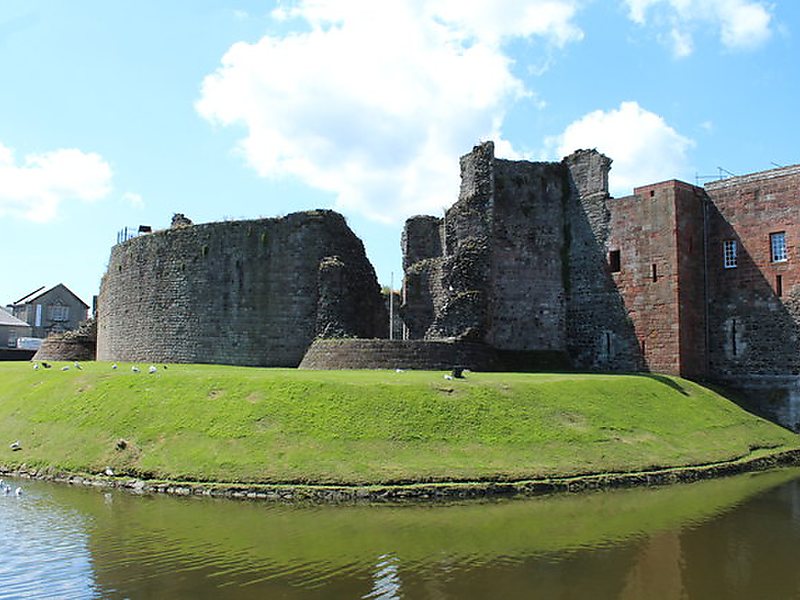
My Maternal 23th. Great Grandfather, Alan Fitz Walter Stewart, 2nd. High Steward of Scotland

Renfrewshire, Paisley, Dunn Square 1900’s
Name: Lord Alan FitzWalter, 2nd. High Steward of Scotland
Birth: 1140
Paisley, Renfrewshire, Scotland
Married: (3 times) Lady Margaret of Galloway, Alesta Nic Morggan of Mar before 1167 in Carrick, Ayrshire, Scotland, and Eva Crawford.

Children: Alexander, Simon, Eva, Walter, Leonard, David, and Niel FitzAlan
Death: 24 August 1204
Dundonald Castle, Irvine, Ayrshire, Scotland

Dundonald Castle, Ayrshire, Scotland
Burial:
1204
Paisley Abbey, Paisley, Renfrewshire, Scotland

Paisley-abbey-paisley-renfrewshire-scotland
Name: Alan FitzWalter, 2nd High Steward of Scotland
“hereditary High Steward of Scotland and a crusader. dapifer to William the Lion”, “King of Scots”, “2nd. High Steward of Scotland”, “0416”, “Alan “2nd High Steward of Scotland” FitzWalter”
Paisley, Renfrewshire, Scotland
(c.1150 – 1204)
Son of Walter FitzAlan, 1st High Steward of Scotland and Eschyna de Londoniis
Husband of Eva Crawford; Alesta nic Morggán, of Mar and Margaret of Galloway
Father of Alexander Stewart, I; Simon FitzWalter; Avelina FitzAlan, Countess of Carrick; Walter Stewart, 3rd High Steward of Scotland and 4 others
Brother of David Fitz-Alan; Emma Fitz-Alan; Walter fitz Walter; Simon Fitzwalter source: geni.comAlan FitzWalter was hereditary High Steward of Scotland and a crusader. Alan was the son and heir of Walter fitz Alan, by his spouse Eschina, who was possibly a member of a family from the south of Scotland. From the time of his succession to his death in 1204, Alan served as dapifer to William the Lion, King of Scots. It was during Alan’s lifetime that his family acquired the Isle of Bute. He was possibly responsible for the erection of Rothesay Castle on the island. source: Wikipedia

Rothesay Castle, Rothesay, Scotland
Alan fitz Walter was hereditary High Steward of Scotland and a crusader. Alan was the son and heir of Walter fitz Alan, by his spouse Eschina, who was possibly a member of a family from the south of Scotland. From the time of his succession to his death in 1204, Alan served as dapifer to William the Lion, King of Scots. It was during Alan’s lifetime that his family acquired the Isle of Bute. He was possibly responsible for the erection of Rothesay Castle on the island. source: Wikipedia

My Maternal 24th. Great Grandfather, Walter Fitz Alan Stewart, 3rd. High Steward of Scotland
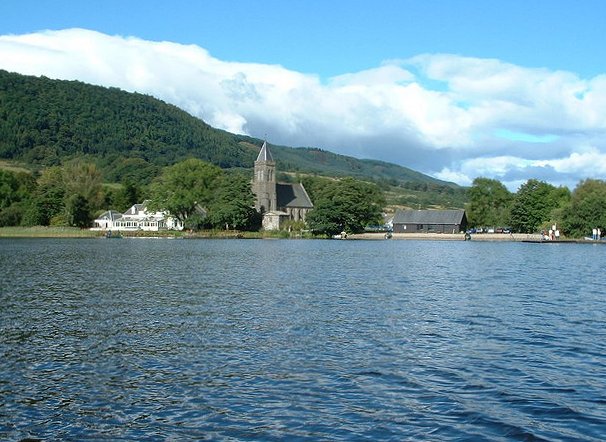
Lake of Menteith, Scotland
Name: Walter Fitz Alan Stewart, 3rd High Steward of Scotland
Birth: 1167
Dundonald, Ayrshire, Scotland
Married: 1210
Paisley Abbey, Renfrewshire, Scotland to Bethoc Nichol Gille Crist, Countess of Angus
Children: (10)
Alexander Stewart, 4th. High Steward of Scotland, sometime Regent of Scotland.
Sir Robert, of Tarbolten and Crookston, and Lord of Darnley.
John, killed at Damietta in 1249, Egypt during the Seventh Crusade.
Walter Bailloch (“the Freckled”), who married Mary de Menteith and became Earl of Menteith.
William,
Beatrix, married Maol Domhnaich, Earl of Lennox.
Christian,
Eupheme, married Adam Wallace, Laird of Riccarton.
Margaret, married her cousin Niall, Earl of Carrick.
Sybella, married Colin Fitzgerald, 1st Lord of Kintail.
Death :
1246
Dundonald Castle, Irvine, Ayrshire, Scotland
Burial:
1246
Paisley Abbey, Renfrewshire, Scotland
Walter was the first in the line to assume the name of Stewart. He witnessed a charter by King Alexander II under the desination “Walterus filius Alani, Senuscallus, Justicar Scotiae”
http://theroyalhouseofstewart.com/descendants_of_the_royal_house_of_stewart_015.htm
Alan died in 1204 leaving a son called Walter who was appointed by King Alexander II of Scotland as justiciary of Scotland in addition to the hereditary office of high steward. This Walter died in 1246 leaving four sons and three daughters.
The third son called Walter was Earl of Menteith. The eldest son, called Alexander married Jean, the daughter and heiress of James Lord of Bute. In her right their son James Stewart seized both the Isle of Bute and Isle of Arran.
https://www.scotweb.co.uk/info/stewart/
Note the slight discrepancy in death date
Walter Stewart
Born unknown
Died 1246
Title 3rd High Steward of Scotland
Tenure 1204-1246
Other names Walter Steward of Dundonald
Nationality Scottish
Offices Justiciar of Scotia
Predecessor Alan fitz Walter
Successor Alexander Stewart
Spouse(s) Béthoc (Beatrix) Mac Gille Críst
Parents Alan fitz Walter
Walter Steward of Dundonald (died 1246) was 3rd hereditary High Steward of Scotland and Justiciar of Scotia.He was the eldest son of Alan fitz Walter, 2nd High Steward of Scotland but which wife of Alan’s was his mother is not clear. He was the first to use Stewart as a surname, and was designated “of Dundonald”.
He witnessed a charter by King Alexander II, under the designation of “Walterus filius Alani, Senescallus, Justiciar Scotiae” and it may be that seal which Nisbet described pertaining to Walter Hereditary High Steward of Scotland. Around the seal it states “Sigill. Walteri filii Allani”.
Family
Walter married Bethóc, daughter of Gille Críst, Earl of Angus by his wife, Marjorie, youngest daughter of Henry of Scotland, 3rd Earl of Huntingdon and his wife, Ada de Warenne.They were parents of:
Alexander Stewart, 4th High Steward of Scotland, sometime Regent of Scotland.
Sir Robert, of Tarbolten and Crookston, and Lord of Darnley.
John, killed at Damietta in 1249, Egypt during the Seventh Crusade.
Walter Bailloch (“the Freckled”), who married Mary de Menteith and became Earl of Menteith.
William,
Beatrix, married Maol Domhnaich, Earl of Lennox.
Christian,
Eupheme, married Adam Wallace, Laird of Riccarton.
Margaret, married her cousin Niall, Earl of Carrick.
Sybella, married Colin Fitzgerald, 1st Lord of Kintail.References:
G. W. S. Barrow, ‘Stewart family (per. c.1110–c.1350)’, Oxford Dictionary of National Biography, Oxford University Press, 2004.
Anderson (1867) vol.ix, p.512
Simpson, David, The Genealogical and Chronological History of the Stuarts, 1713, p.38
Burke, Messrs., John and John Bernard, The Royal Families of England, Scotland, and Wales &c., volume 2, London, 1851, pps: xl and xli
Nisbet, Alexander, A System of Heraldry volume 1, Edinburgh 1722, facsimile 1984, part 1, p.43,
Clay, John W., FSA., editor, The Visitation of Cambridge, 1575 and 1619 by Henery St.George, Richmond Herald, Harleian Society, London, 1897, pps: 7 – 11 source: Wikipedia

Clans of Scotland Map


